#But like these are books featuring characters around the same age as their target demographic
Explore tagged Tumblr posts
Text
TBCH I think that if you're asking where the adults are/why the adults aren't solving the problems in middle grade/ya books, you've probably outgrown them and need to move onto books for adults.
#Don't reblog this the book community scares me#But like these are books featuring characters around the same age as their target demographic#they want to see people like them going on adventures and saving the day#But I'm listening to my friend's girlfriend bitch about whatever YA novel she's reading RN#and I really want to sit her down and ask her gently to please please please read books for adults
3 notes
·
View notes
Text
The Marrow Thieves by Cherie Dimaline is a dystopian novel which shares similarities with children’s literature, but has enough significant differences that make it specifically for young adults. Unlike children’s literature, The Marrow Thieves features a teenage protagonist, contains vulgar language, and explores romance and sexuality. What makes these differences significant is that their inclusion in a YA novel and exclusion in children’s literature, reveal current cultural notions of what counts as being “appropriate for kids.” Francis, the novel’s protagonist, is a teenager. Similarly to children’s literature, the novel explores his autonomy, but in a way that is different enough from children’s literature that it likely would be inappropriate for the genre. As a teen, Francis is beginning to gain more and more autonomy compared to a child, therefore his growth is centered more around his direct conflict with those limiting him, rather than age alone as is usually explored in children’s literature. After being bossed around by Miig, Francis becomes annoyed, and thinks to himself, “[f]rigging Miig, so bossy. Riki and Slopper were right who died and made this guy Chief?” (97). This kind of attitude towards a parental figure exercising their authority makes sense for a YA novel with a teenage protagonist, but may not be explored the same way with a child protagonist due to the level of disdain Francis has for Miig in this passage. The profanity in this novel is significant too, as the characters are “allowed” to do this because it is a YA novel. As fiction begins to be targeted towards older demographics, the language begins to change as a reflection of that. The profanities used in this book are an example of this notion, as there are swear words that occur every so often which absolutely would not be appropriate if published in a children’s book today. Francis’ romantic life is another thing that is “appropriate” for a YA audience but perhaps not appropriate for a child audience. One scene in particular that explored Francis sexual attraction to another person is when he is sharing a bed with Rose. To him, “[s]he was the most beautiful girl in the world and [they] were in bed together” (72). While a child may be able to pick up on the sexual themes, the lack of sexual themes in today’s children’s literature climate signals that current cultural notions of what is appropriate for children’s media deem sexuality, and possibly even romance, as themes that are too mature for children. A teenage protagonist, swear words, and sexuality and romance are all appropriate for the book The Marrow Thieves, because it is a YA novel, and not purely children’s literature.
Dimaline, Cherie. The Marrow Thieves. Altona, Cormorant Books, 2023.
Logged and Written March 29, 2024
Hey, you know what tumblr icon I kind of miss?
5 notes
·
View notes
Text
THE MYSTERY OF SUNN CLASSIC PICTURES

It was like the positive, life-affirming New Age mysticism of the hippies took a sudden turn for the dark and very strange. In the mid-Seventies, as the country was overwhelmed by a creeping atmosphere of impotent anger, paranoia and existential despair in response to Vietnam, Watergate, race riots, Kent State, the Tate-LaBianca murders, bomb-tossing student radicals, pollution, high-profile assassinations, the oil crisis and the emergence of disco, Americans sought solace in some form by plunging headlong into a collective national obsession with all things Mysterious and Unexplained. Suddenly Bigfoot was all the rage, as was The Loch Ness Monster, The Bermuda Triangle, UFOs, psychic phenomena, near-death experiences, apocalyptic Biblical prophecies, and ancient astronauts. People were desperate to hold onto something, anything, no matter how ridiculous and fanciful, as the whole world seemed to be crumbling and burning around them. If something pointed toward an unseen world, a world outside this stinking mess we were stuck with, or better still promised the complete obliteration of this stinking mess, then at least there was a glimmer of hope. Almost overnight, a cottage industry cropped up, flooding the market with cheap paperbacks, magazines, movies and TV shows—even comic books and board games—devoted to unexplained phenomena of all sorts. Personally I didn’t give a Toss about the state of the world, but I still subscribed to UFO Reporter magazine, had a shelf full of cheap paperbacks with titles like The Search for Bigfoot and From Outer Space, and never missed In Search Of…, the half-hour syndicated series narrated by Leonard Nimoy that delved into one mystery or another every week. For god sakes, I even had the Bermuda Triangle board game.

But in what may have been the strangest phenomenon of all, far more bizarre than the legends surrounding Area 51 or the Philadelphia Experiment, in 1971 Schick teamed up with the Church of Latter Day Saints to launch a low-budget movie studio that aimed to become the epicenter of High Strangeness culture.
Yes, a razor blade company and the Mormons decided to make movies together. How could the results be anything but unfathomable?
(It’s worth noting before we get too far that in my research into the history of Sunn Classic Pictures, it became clear the indie studio, which still exists in some vague form today, seems to have gone to some great lengths to fog their early history, never once mentioning the Mormons, and in some cases denying there even was a Sunn Classic Pictures prior to 1980. With only a few rare exceptions, the reasonably small Sunn Classic catalog, now owned by Paramount, never received any kind of home video release, which only adds to the mystery.)
As the official story goes, in 1971, the employees of Schick—a subsidiary if the pharmaceutical company Warner-Lambert—approached Rayland Jensen and asked him to launch a new movie studio. Appalled by all the filth and violence and sex and cursing that infested American movie screens, as well as the so-called “intellectuals” who thought these movies were “good,” they felt real Americans needed a family-friendly alternative. Those Schick employees concluded Jensen was just the man for the job, as a few years earlier he’d handled distribution for a nature picture released by the Utah-based American National Enterprises. The picture had done very well.
Okay, let me stop there. As I said, that’s the official story, as far as it goes and as little sense as it makes. The real story goes more like this.
In 1971, a renegade group of American National Enterprises employees, led by Jensen and inspired by that same disgust with what American movies had become, broke away to form a new production company to release family-friendly, G-rated pictures. Patrick Frawley, the ultraconservative, paranoid, anti-communist conspiracy theorist who also happen to run the Schick razor blade company invested a bundle in the new venture, ensuring he would have some say in the kinds of movies the new company would release.
With headquarters divided between Salt Lake City and Park City, Utah, the newly-christened Sunn Classic Pictures (aka Sunn international, aka Schick Sunn Classic Pictures) set out to Make family-friendly features and documentaries aimed at working class, conservative, God-fearing Americans who didn’t go out to movies very often, likely because of all the above-mentioned filth and sex and violence and cuss words. Moreover, they wanted to make certain these warm-hearted films turned a healthy profit. This involved two basic techniques.
The first was four-walling, a distribution method American National Enterprises helped pioneer. Instead of spending a fortune on all those prints necessary for a massive nationwide theatrical release, Sunn instead rented theaters serving the target demographic, inundated the market with ads and gimmicks, then screened their new film at the selected theater for no more than a week. After that extremely limited run, they packed up and moved the print to another theater far away. It was a tricky ploy. On the upside four-walling a picture allowed the production company to keep all the box office receipts without having to divide them among various middlemen.
If they knew the film was a stinker, it also allowed them to skip town before the bad reviews could do them any damage. On the downside, those limited runs also meant the picture would be there and gone before any positive word of mouth could work its magic. Sunn would try four-walling a new movie for a few months, and if it was making money, they might consider a nationwide release. If not, then they’d start trying to sell it to TV for syndication. It wasn’t a tack that worked all the time, but often enough to make it worthwhile, and it left them more of an escape route than a national release ever would.
So. “Family friendly.” Yes. If you want to make Disney-style pictures but don’t have Disney-style budgets to work with, animated features are out. So are live action films with any kind of special effects. Basically what you’re left with are nature films, right? No expensive sets, very few actors, and as a result very cheap to make. So Sunn began producing wilderness adventure stories.
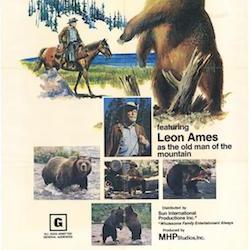
In those very early days, you can definitely smell Patrick Frawley’s hand in the development process. Films like 1971’s Toklat, in which a man is forced to track down and kill a beloved pet bear after the bear kills a local rancher’s livestock, is a prime example. (As it happens, Toklat was the first Sunn picture I ever saw, Green Bay being a conservative working-class town, and so on Sunn’s demographic map. ) There was something decidedly Nietzschean about those earliest releases. Most of them featured lone individualusts with strong principles who flee the corruption of modern civilization to face the harsh realities of nature alone.
Now, think back and ask yourself honestly” what kid in his right mind has ever liked nature films, Nietzschean or otherwise? Maybe Mormon kids did, but certainly not normal kids. Nature movies are dull as dust, all those endless shots of trees and rivers and shit. Even if it’s supposed to be a true adventure story about some historical frontiersman, so what? Where are the explosions and car chases and monkeys doing funny things? You know who liked nature films? Grandparents! Grandparents loved them because they were wholesome and taught valuable lessons. They insisted on dragging their grandkids to them because they didn’t have to worry about being embarrassed or having to define certain words on the trip home.
The handful of films Sunn Classic released in their first three years—most all of them wilderness adventures about solitary manly sorts learning to dominate nature in one way or another—did okay. They didn’t lose money, but they also didn’t become runaway hits.
In 1974, even after several rewrites, no one at Sunn Classic Pictures had high hopes for the next film on the docket, something called The Life and Times of Grizzly Adams. Sure, it was loosely based on an historical figure who again fled the corruption of the modern world to live in the wilderness, befriending a grizzly bear along the way. But the character was not some stalwart and steely-eyed Ubermensch—he was gentle and kind-hearted. What the hell were they going to do with that?
Enter Charles Sellier, and the second technique that would be central to Sunn Classic’s success. Sellier, today considered one of Sunn’s true founders together with Rayland Jensen, was a recently-converted Mormon in his thirties, as well as the author of the 1972 novel upon which Grizzly Adams was based. As Sunn’s new executive producer, he had a different—and eventually hugely influential—approach to marketing films.
Sellier set aside an estimated $85,000 for market research before a new film went into production. This involved targeting the desired demographic with door-to-door and telephone interviews asking housewives and construction workers what kind of movies they would like to see. This also involved screening early rushes from films currently in production for hand-picked test audiences in order to get their reactions and advice. This is, of course, standard operating procedure now, but it was radical back then, and something that mortified directors and screenwriters. In some cases Sellier even had members of the test audience wired to biometric scanners to measure their reactions to the scenes they were being shown, and use those reactions to have a script rewritten more to the test audience liking. If audience pulse rates went up whenever a certain character was on screen, well, they’d build up that role. If a certain animal warmed their hearts, well, maybe they’d make a whole movie about that particular animal.
Sellier’s method of crowd-sourced filmmaking was first tried on The Life and Times of Grizzly Adams, and sure enough, the film, starring former viker movie regular Dan Haggerty, became Sunn’s first bona fide international hit, bringing in over $20 million. The film was such a smash among grandparents it quickly spawned a Sunn-produced TV series, which was also a big hit among grandparents. To date, the Grizzly Adams franchise remains Sunn’s biggest cash cow.
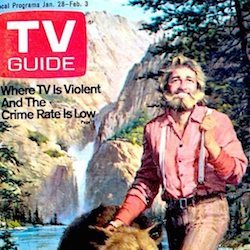
But something else happened in 1974 that would help make that iconic Sunn Classic logo as familiar and comforting as the Toho, American International, Shaw Brothers and Troma logos. To some of us, anyway.
In 1968, Erich Von Daniken published Chariots of the Gods?, a book which argued, through some mighty suspect and loosely interpreted archaeological evidence, that aliens had visited Earth thousands of years ago, and among other things helped build the Egyptian and Mexican Pyramids, Stonehenge and the statues on Easter island. It was one of the first major hallmarks of the High Strangeness Culture to come. Originally published in Germany, the book became an International sensation among those with a very high tolerance for pseudoscience, pseudohistory, and bullshit in general..
In 1970, German director Harald Reinl made a documentary based on von Daniken’s book, and it, too, became a big hit across Europe. As sillyassed as the whole thing was, I’d argue the film was even more effective than the book thanks to the visual presentation of all the supposed evidence.
Well, after seeing how much money Chariots of the Gods? Was pulling in overseas, and interested in such topics himself, American TV producer Alan Landsburg acquired the U.S. rights, re-edited the filmn, brought in Rod Serling to narrate, and broadcast it in 1973 as In Search of Ancient Astronauts. It would be the first of a trilogy of TV documentaries about ancient astronauts produced by Landsburg and narrated by Serling.
Noting the ratings that Landsburg doc brought in, as well as that European box office, Sunn obtained the US theatrical rights to In Search of Ancient Astronauts, changed the title back to Chariots of the Gods? And began four-walling it around the country in 1974. It didn’t matter that by that time countless articles and books had completely debunked all of von Daniken’s claims, nor that critics had savaged the film, in some cases even calling it racist for purporting indigenous people in Mexico, Africa an elsewhere could never have created these wonders by themselves. The picture made money. It may not have been Grizzly Adams money, but enough to leave Sellier and Jensen convinced they might be onto something with these documentaries about weird shit. Documentaries were even cheaper to make than nature films, and the demographic they were aiming at seemed eager to believe in monsters and aliens and conspiracies, so there you go. For the next five years, along with the wilderness adventures and wholesome TV adaptations of Huck Finn and Gulliver’s Travels, Sunn gave the half-wits like me what we wanted.
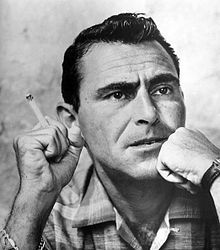
In 1975, Sunn picked up the theatrical distrobution rights To The Outer Space Connection, the last of Landsburg’s ancient astronaut trilogy (as well as one of the last things Rod Serling worked on before he died). This final entry argued not only that aliens had visited earth thousands of years ago, but had planted humans here in the first place and had been guiding our evolution ever since. This wasn’t exactly a new idea, and could be traced back, so far as I’m aware, at least to Nigel Kneale’s 1958 BBC miniseries Quatermass and The Pit. But the film, directed by Fred Warshofsky, went several crazy steps beyond Kneale, claiming we know exactly where the aliens came from and why, that the Mayans were themselves aliens, and that these same aliens would return to Earth on Christmas Eve, 2011.
The TV documentaries made enough of a splash for Landsburg that he parlayed them into the above-mentioned weekly In Search Of… series, which began airing in 1977, right around the same time Grizzly Adams hit the airwaves.
Both Chariots of the Gods? And The Outer Space Connection helped cement the template that would define the rest of the Sunn-produced High Strangeness documentaries that would follow, making them so effective on the young, the susceptible, and the merely desperate. The real key, it seems, far beyomd the film’s actual content, was conscripting an authoritative host/narrator who can present the most insane pseudoscientific theories and shaky evidence with a straight face while repeatedly using terms like “indisputable,” “Proven beyond a doubt,” and “scientists agree.”: “It’s an incontrovertible fact these ancient carvings prove alien visitors walked on Earth over five hundred centuries ago.” It was the simplest of carnival sideshow techniques, but one that kept drawing suckers to the theaters.
The same year they released The Outer Space Connection, Sunn also released The Mysterious Monsters, which was less a documentary than a series of vignettes about Bigfoot, the Yeti, and The Loch Ness Monster. Director Robert Guenette had been making what you might call speculative Sunn-style documentaries long before Sunn even existed, so he was in familiar territory. In fact, The Mysterious Monsters includes scenes borrowed from Guenette’s 1974 TV movie, Monsters: Mysteries or Myths?, which coincidentally had been narrated by Rod Serling. The (mostly) new and expanded Sunn production was hosted by Peter Graves, who was as straight-faced as they come. In between shots of Graves and ten other men in cowboy hats wandering the forest on horseback looking for Bigfoot, we get eyewitness accounts from those who claim to have actually seen Bigfoot, Nessie, or the Yeti. Unlike most Bigfoot films of the era (and there were a bunch), The Mysterious Monsters infers a decided fearlessness and hostility on Bigfoot’s part, claiming he not only terrorized innocent victims, but wandered into the suburbs to terrorize them. The recreated Bigfoot encounters here are kind of fun, and in fact the film contains two solid scares, at least if you’re nine. Nessie and the Yeti get short shrift, and those scenes of Graves riding through the forest with that hopeless hunting party are interminable, but the picture was another big hit,arriving at precisely the right time given 1975 was a banner year for Bigfoot cinema. In the end, and where he got his information who the hell knows, Graves announces there is a community of some two hundred Bigfeet living in Northern California, though Graves and the hunting party find none of them.
Another hallmark of Sunn’s documentaries was that most inevitably ended with an outlandish, shocking, unexpected, and wholly unsubstantiated claim. The influence of mondo films—Mondo Cane, Africa ama and the like—on Sunn’s documentaries is undeniable. But while mondo films aimed to shock grindhouse audiences with footage (whether real or created) of bizarre and extreme human behavior, Sunn aimed to leave family audiences womderstruck at the possibilities of a mysterious world of magic and monsters just beyond our perceptions.
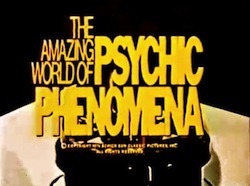
In 1976, Sunn followed up The Mysterious Monsters with The Amazing World of Psychic Phenomena, also directed by Guenette, this time narrated by Raymond Burr. The film is less a cohesive documentary than another shaggy dog series of vignettes exploring extrasensory perception, astral projection, and telekinesis as well as ghosts and spiritualism, featuring an all-star cast of celebrity psychics including Jeanne Dixon and Uri Geller. Not surprisingly, Burr, who doesn’t seem terribly convinced himself, informs us that there is irrefutable scientific evidence that all these powers are absolutely real and for true.
That same year also saw the release of one of Sunn’s more patently ridiculous outings, In Search of Noah’s ARk, a film which, in many ways, proved a turning point. The film was the first to be hosted/narrated by character actor Brad Crandall, who would go on to narrate most of the remaining Sunn Classic documentaries, as well as appearing in a few of their TV shows. It was directed by James L. Conway, who quickly established himself as Sunn’s go-to in-house director, churning out five or six features and TV movies a year.
Apart from turning to mostly in-house staffers to make their films instead of bringing in outside directors and celebrity hosts, In Search of Noah’s ARk also marked the point at which Sunn further fed their demographic by adding a decidedly fundamentalist Christian focus to many of their films, from Noah’s Ark to their TV series Greatest Heroes of the Bible to two documentaries about near-death experiences to 1979’s (and grammar be damned) In search of Historic Jesus.
In business terms it was a savvy move. To this day, films aimed at a fundamentalist audience, especially if they support a strictly literal interpretation of the Bible, can bring in more money than most Hollywood films. They certainly bring in more than most Mormon themed films, and apparently the more patently ridiculous the involved claims, the better.
The supposed “scientists” who lay out the evidence that the remains of Noah’s honest-to-God ark are still sitting up there on top of Mt. Ararat (should anyone care to take a look) aren’t, um, scientists at all. One, a supposed physics professor, argues there’s a mountain of geological evidence proving the world was deluged by an all-consuming flood, um, five thousand years ago. Another claims the ark was first discovered by a Russian expedition sent by Tsar Nicholas II in 1916, but all the reports and evidence were destroyed by dirty communist revolutionaries, um, two days after the expedition returned. It all goes downhill from there, and you have to feel some pity for the poor gullible fools who believed all this nonsense.
I saw nearly all of Sunn’s documentaries in the theater when I was a kid, and now feel sorry for my mom, dad, and older sister, who I suspect drew straws to see who had to take me whenever a new Sunn picture hit town. When I was ten I bought every last nutty claim. Going back and watching them again four decades later, I find myself blurting, “Wait, what?” Aloud after nearly every scene. They do, however, remain fascinating artifacts and a mirror of a certain psychological makeup. They’re also still fun as hell for all their crazy dumbness, if you keep your critical thinking skills at the ready.
Sunn found themselves in the middle of a shitstorm in 1977 with the release of The Lincoln Conspiracy, also directed by Conway. Historians, critics and the media at large attacked the film for presenting as fact a convoluted conspiracy claiming the assassination of President Lincoln was an inside job, closing, as Oliver Stone’s JFK would years later, with a demand the investigation be reopened. Conway would later claim the film was just a silly speculative docudrama based on a couple recent books, but even the authors of the books denounced the film. Still, a little controversy has never been known to hurt the box office.
Over the next few years Sunn continued to release two or three pseudoscientific documentaries a year, including Beyond and Back, Beyond Death’s Door, and The Bermuda Triangle, the latter of which claimed all those ships and planes vanished after being zapped by a malfunctioning Atlantean particle bean that was lost somewhere on the ocean floor near Bimini. Bimini? Well, I gotta say, as explanations go, it makes about as much sense as any other.
A personal favorite from the late Sunn era for its sheer nihilistic simplicity was 1979’s Encounter With Disaster, this time directed by Charles Sellier himself. Using his patented market research techniques, he brought a test audience into a theater and showed them dozens of newsreel clips of fires, earthquakes, The Hindenberg, race car crashes and the like, measuring responses to see which were considered the most exciting. He then strung all the most popular disaster footage together and released it as a feature.
Encounter With Disaster was perhaps the one true mondo film Sunn released during their brief heyday, and a definite anomaly. Toward the end, instead of documentary footage, talking heads and manipulative narration, films like The Bermuda Triangle, Beyond Death’s Door and In Search of Historic Jesus cane to rely more on speculative recreations with actors, sets and scripted dialogue. Although a narrator does pop up occasionally to say, in essence, “Yup, this really, really happened!,” the films come off more like splintered docudramas than documentaries, which somehow makes their assorted theses seem even less plausible.
It’s worth pointing out here that In Search of Historic Jesus, as delightfully awful as it is, does, without saying as much, offer a clear case study of the effect Sellier’s marketing machinations could have on a film.
Directed by Sunn’s in-house cinematographer Henning Schellerup (who prior to Sunn had worked on everything from softcore porn to Corman productions) and again narrated by Brad Crandall, Historic Jesus clearly began life as a documentary aiming to present all the independent historical evidence proving the Biblical account of Jesus’ life was accurate. Given there was precious little of that to be found, it became a documentary about the Shroud of Turin. Given there wasn’t really ninety minutes worth of material about the Shroud of Turin, they shot an interview with a fake scientist offering some, um, plausible scientific explanations for the Star of Bethlehem, then plundered some footage from the Noah’s Ark movie (though oddly the data offered in the latter somehow changed between 1976 and 1979). All this left them with a film that was about twenty minutes long.
The film was saved when Sellier gathered a test audience of fundamentalist Christians. After showing them a few scenes, he quickly learned they didn’t need any scientific or historical proof that Jesus really existed. They just wanted to hear more Jesus stories.
Taking their advice, the bulk of the film became a string of recreations of Jesus’ Greatest Hits acted out by amateur actors playing Jesus, Mary, Herid, Pontius Pilate and assorted disciples. No effort whatsoever is made to prove these recreated scenes actually happened. So instead of a pseudoscientific, pseudohistorical account of the, um, historical figure known as Jesus of Nazareth, it became another Sunday School-ready Jesus movie, all primed and ready to be rented to church groups across the country. In short, then, calling the film In Search of Historic Jesus actually makes sense.
By 1979, Sunn’s documentaries seemed to be running out of gas. They were still turning a profit (especially that Historic Jesus thing), but the profits weren’t what they once were, and the films were costing more to make. Also, other production houses had picked up on the Sunn Classic formula and began releasing High Strangeness docs of their own. In 1978, for instance, Amran Films and RCR released The Late Great Planet Earth, based on “Biblical scholar” Hal Lindsey’s massive bestseller which claimed all the prophecies in the Book of Revelation were coming true, and the long-promised Apocalypse would arrive any day now. If I remember correctly, the world was supposed to end in 1986. The film was hosted and narrated by Orson Wells, who had once been asked to narrate a Sunn film, but was so horrified by their marketing practices he turned down the job.
(A few years later in 1981, Welles would also narrate a documentary about Nostradamus’ prophecies, which was directed, coincidentally enough, by Sunn Classic alumnus Robert Guenette. Just to illustrate how influential Sunn’s experiment had been, The Man Who Saw Tomorrow was distributed by goddamn WARNER BROTHERS, of all places.)
What struck the real death knell to Sunn’s hugely successful string of pseudoscientific and pseudo historical extravaganzas was a changing culture. We were own the brink of Morning in America and the Reagan Era. Interest in silly monsters and psychic phenomena was waning as everyone put the ’70s behind them, focusing instead on the stock market, the threat of nuclear war, cocaine, designer clothes and other tangible real world issues.
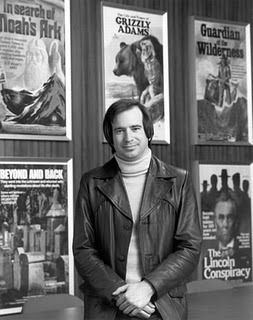
Charles Sellier
In 1980 Sunn Classic Pictures was bought out by Taft Enterprises, a Cincinnatti-based conglomerate. The suits in Taft’s entertainment division had a few ideas of their own about what American moviegoers wanted. When they correctly saw that the days of four-walling were about over as the business ties between the major studios and national theater Chains grew stronger, Charles Sellier walked away to continue writing, producing, directing and marketing films on his own terms. In 1984 he directed the notorious holiday slasher film, Silent Night, Deadly Night, a picture remembered more for its ad campaign than anything in the picture itself. Sellier also later converted from Mormonism to evangelical Christianity.
When Taft likewise decided family friendly entertainment was a dead end, that the market for G-rated wilderness adventures simply wasn’t there anymore, that a film had to be rated PG or R if it hoped to make any money, Jensen and a few other original American National Enterprises refugees quit in disgust, and once again formed their own production company to offer honest American families wholesome entertainment options. Their first film was 1981’s Private Lessons, a teen sex comedy starring Sylvia Kristel. It made a lot of money.
Director James Conway stayed with Taft for awhile, helming several pictures, including the monster movie The Boogens . Interestingly, the very first Taft/Sunn release, perhaps formulated to attract Sunn’s core audience, was the Conway-directed Hangar 18, starring Darren McGavin, Robert Vaughn and Gary Collins. It was the perfect transitional picture, a sci-fi conspiracy thriller loosely based on what might well have been the subject of the next Sunn Classic documentary: Roswell and Area 51. Conway later went on to become an executive at Spelling Entertainment, overseeing a mountain of wildly successful crap.
Over the subsequent decades there were more sales and acquisitions, with the various companies overseeing the Sunn Classic brand themselves being gobbled up by even larger faceless corporate entities. Sunn vanished, then reappeared, then vanished again. Today there are vague, mysterious hints that Sunn Classics Pictures has been re-launched after Rayland Jensen teamed up with Lang Elliott, original founder of Tri-Star Pictures. But if Sunn really has risen from the grave, would it matter?
For good or ill, over the course of that five-year stretch between 1974 and 1979, Sunn Classic Pictures illuminated one strange facet of a very strange era, warped millions of impressionable minds (like mine), fully capitalized on a nation’s despair and collective neuroses, and left an indelible mark on the culture. Take even a cursory glance at what’s airing on the History and Discovery Channels, or at how the marketing departments of any movie studio large or small operates today. They simply wouldn’t be what they are In the second decade of the twenty-first century had it not been for Sunn Classic Pictures., and fore that we can thank the Mormons, a right-wing kook, and Bigfoot.
by Jim Knipfel
2 notes
·
View notes
Photo

I have MIXED feelings on this
On the ONE hand , if he’s talking solely about XME Laura and if X-Men Evolution was still going on that this is what he would have done that totally makes sense, since her character only appeared in two episodes and had very little character growth in the series.
If he’s including 616 Laura, she was featured as a teenager in most of the books and is now 20-21 in the series; so her coming out around college age does fit demographically with a lot of LGBTQIA youth.
Her only decent relationship, in my opinion, was Hellion . I don’t see that relationship being revisited on account of how it ended in Liu’s X-23 Solo series, Marvel trying to pretend New X-Men wasn’t even canon/doesn’t exist, and Hellion’s C-Lister status not matching up with Laura’s A-Lister status.
Now, I’m WAY MORE excited for the idea that Laura is gay, than Laura dating characters like Teen Warren.
My problem with this is the same problem I have with JK Rowling, or some of the the MCU movies- saying after the fact that a character is LGBTQIA, but doing little to actually showcase that in the text or film solely for the writer/creator/director to get attention and praise.
The fact is Craig Kyle did not feature Laura as LGBTQIA in ‘Target X’. He did not feature her as LGBTQIA in ‘New X-Men’, she was put in a heterosexual semi-relationship. He did not feature her as LGBTQIA in X-Force. Liu was the one who provided SUBTEXT with Jubilee, NOT Craig Kyle.
Maybe there were some restrictions against it; maybe Marvel or Christopher Yost vetoed the idea and that’s why we got her relationship with Hellion instead, but I just personally feel like giving him credit for representation he didn’t actually provide in his work is just not accurate.
I have NO PROBLEM with Marvel deciding to represent Laura as gay, but I want actual representation . Not a creator stating it after the fact, so it won’t affect Laura's trade back sales, when he provided very little actual subtext that this was a thing and put her in a heterosexual relationship.
#Craig Kyle#Twitter#x 23#x23#laura x23#Laura Kinney#LGBTQIA#lgbtq representation#X Men Evolution#XME#new x men#new xmen#Marvel#Hellion#Julian Keller#Angel#Warren Worthington III#Jubilation Lee#Jubilee#academy x#bring back the new x men
74 notes
·
View notes
Text
And another thing about ‘Night of the Lizard’...
There is a scene in the middle of the episode where the Lizard has abducted his with Martha Connors leaving their son Billy behind.
In the scene Spider-Man comforts Billy and promises to take him to a neighbour and save his parents.
It was only on re-watching that scene this time around that my childhood memories hit me hard and I remembered that scene spoke to me quite a bit as a kid.
Billy was around my age and there he was being reassured by the much older and powerful protective figure of Spider-Man and back when I was like 4 and believed Spider-Man was actually real the idea of Spider-Man being there for me was actually quite resonant.
More than this though it yet further speaks to the absolute ignorance and idiocy of the mantra that Spider-Man has to be young and is defined by his youthfulness, that it is that which makes him relatable and in being relatable he is thereby successful.
Because think about it...How on Earth was Spider-man the Animated Series, a show who’s demographic was at the biggest of pushes 5-12 supposed to honestly RELATE to a 19 year old college student who was trying to help his mother pay the bills?
They couldn’t, they didn’t. They instead either related to Spider-Man on a far more general level, came to relate to him as they got older or more likely did what I did and looked up to him. It has been said that Superman and Batman are paternalistic figures, somewhat informed by the fact that in the days they were created there were a lot of children who due to the Great Depression and World War II were missing father figures in their lives.
Maybe a straight up father figure would be a wrong analogy to apply to Spider-Man, at least the one presented in media before 2007 but a big brother figure?
That seems more apt. And given how MOST Spider-Man media outside the comics was you know, trying to at least catch the 5+ child demographic it honestly makes no sense to allege he needs to be relatable and therefore young. Even a teenage Spider-Man doesn’t really do that, not unless he is uncharacteristically profoundly childish as was the case in the USM cartoon and Homecoming. The Spec Spidey Peter Parker whilst young, naive and not as mature as his 1994 cartoon counterpart was nevertheless a world apart from those renditions and definitely someone who wasn’t directly relatable to 5 year olds.
And lest we forget MOST media adaptations of Spider-Man which have featured this too old for 5 year olds take on the character have been SUCCESSFUL!
The 90s show was on average watched by more people than bought the monthly comic books during the same time period, possibly more than did so in the 1960s. And it featured an in character Spider-Man who was NOT relatable to it’s target demographic, but an older person they could aspire to be like someday or else view as a friendly big brother figure who’s protect them.
#spider-man the animated series#Spider-Man#Peter Parker#Curt Connors#the Lizard#Lizard#Marvel Animation#Ultimate Spider-Man#Ultimate Spider-Man cartoon#spider-man: homecoming#the spectacular spider-man#spectacular spider-man cartoon#the spectacular spider-man animated series
15 notes
·
View notes
Text
5 Outstanding examples of influencer advertising campaigns
Are you trying to decide whether influencer advertising campaigns are an option in your emblem or organisation? In our previous weblog submit, ‘influencer advertising and marketing: what it's miles and why you must be using it’, we exact precisely why corporations have Digital Marketing Company Glasgow to be exploring the effect of social influencers and offered 5 high quality benefits to employing influencer advertising and marketing campaigns. Underneath, lively internet advertising (united kingdom) have detailed five influencer marketing campaigns that worked relatively to power income and increase brand attention – with the aim of presenting precisely why, and the way, manufacturers ought to utilise the energy of influencers inside their own advertising techniques. Daniel wellington’s instagram endeavours

Read Also:- How to find where your competitors are advertising?
based in 2011 as a easy, $24,00 begin-up, daniel wellington (dw) has hired user generated content material and social media systems to generate astounding income. From 2014 to 2015, the daniel wellington logo accumulated an increase in earnings at over 214%, a notable instance of how influencer advertising and marketing campaigns can fully improve your logo cognizance – in truth, in 2015, daniel wellington become named one of ‘the excellent brands running with influencers’, and their collaborations with social media influencers have most effective continued to develop and flourish. The watch corporation have labored with the likes of kylie jenner, tanya burr, and kimmy schram to draw interest to their products via channels consisting of instagram and youtube, each of which might be pretty populated with their target demographic. Why become this marketing campaign powerful? With each daniel wellington influencer advertising and marketing campaign, an character promo code unique to the social influencer changed into promoted along the photograph or characteristic of a daniel wellington watch, offering cut price and encouraging audiences to take advantage of the code to shop for what could in any other case be a huge buy. Because of this advertising push, the daniel wellington brand has considering come to be synonymous with cool, edgy, and on-fashion influencers who lead a lifestyle that their fans might also desire to emulate – and by using advertising the watches at a reduced and accordingly plausible rate, their fans are one step closer to realising their insta-dreams. This precise influencer advertising campaign is a outstanding instance of how using the maximum appropriate platform and providing discounts to make the product seem greater attractive will permit direct connections with your target audience. Bootea
bootea describes itself as a ‘passionate health and weight reduction enterprise that strives to promote an lively, wholesome, and balanced lifestyle.’ they declare that their weight reduction products, of which encompass shakes, truffles, and ‘teatox’, mixed with normal exercise, will help users to shift the kilos speedy. Bootea completed an intensive social influencer campaign, running with stars including scott disick, vanessa hudgens, and britney spears to reach thousands and thousands of social media users. Why became this campaign powerful? Bootea’s marketing campaign highlights the importance of your chosen influencer platform. Instagram is inundated with pictures of sculpted bodies and fitness pointers, so selling a logo that guarantees weight loss so openly will at once trap your target audience’s interest whilst that very thing is on their mind. The usage of influencers which can be recognized for boasting a match frame and healthy lifestyle to sell bootea’s merchandise will suggest that their fans companion bootea with fitness and weight loss, strengthening the brand’s photo and ethos. Regular exposure to the ‘best frame’ will no question lead to instagram customers feeling hyper aware about their personal ‘flaws’, therefore persuading them to chase an appropriate solution presented by their idols – bootea. Make it depend with casey neistat and nike
casey neistat, american youtuber and filmmaker who is regarded for his unconventional modifying and storytelling techniques. In 2012, nike hired neistat and max joseph of catfish reputation to create a commercial for nike’s new product, the fuelband. Neistat and joseph took the coins and went rogue, traveling 34,000 miles across the globe, traveling 16 cities in thirteen international locations throughout 3 continents in 10 days and filming each moment. Neistat states that he concept to himself what the phrase ‘make it rely’ meant to him – packing a bag and touring round the sector with just a digital camera and his fuelband. Why became this campaign powerful? Whether or not neistat’s insistence that nike had no idea of his touring plans is true or not, you can’t argue with the perceived authenticity of the marketing campaign. By accepting neistat’s offhand and spontaneous personality and approach to his movies, nike’s fuelband turned into given first rate publicity (the video has over 24 million views so far) and the product’s use changed into thoroughly fulfilled and displayed within the video. The video received 790,000 perspectives inside 24 hours of its launch, an unqualified viral hit. As with many influencer advertising campaigns, the character of the chosen influencer is fundamental for making sure the achievement of the merchandising. Nike’s stable relationship with neistat meant that neistat could exit on a limb and take a creative danger, ‘making it count’ by using generating content material this is in keeping with both events’ ethos and emblem. Zoella’s ‘e book membership’ partnership
in june of 2016, zoella, a. Okay. A youtuber zoe sugg, released a ‘book club’ of kinds in partnership with bookstall giants w. H. Smith, offering her preferred choices to her eleven. 5 million visitors. The books featured within sugg’s first video, my e-book club picks, were all the ya (younger person) genre, a clever try and ensure that zoella’s following, most of the people of whom are aged 13-18, will happily have interaction with the content material and purchase the recommended novels. The partnership between whsmith and sugg makes plenty of feel. Whsmith glaringly recognised sugg’s enormous following – a mess of youngster women who had been willing to be encouraged by means of sugg in a way that could simply pass as real. Why was this marketing campaign powerful? Simply one glance on the books featured in the first e-book club bundle shows that sugg’s viewers were really the appropriate target audience for whsmith’s young person category. In reality, the day after sugg released her video offering the alternatives, the sales of each e book marketed had skyrocketed between 1,817% and eleven,164%, with whsmith reporting an 8% rise in annual income some months after the release. Sugg’s ‘massive sister’ personality fully helped to push the marketing campaign and make it an all-spherical fulfillment, her satisfied disposition and boundless enthusiasm able to persuade even the most casual of viewers to peruse via the whsmith internet site to locate the titles. This unique influencer advertising and marketing marketing campaign helped to growth emblem recognition, attracting younger audiences to the shops and riding sales exponentially. Sugg’s partnership with whsmith is one which could retain for as long as each parties desire, with new and appropriate younger grownup titles launched every yr and the appropriate target audience prepared-and-ready to acquire understanding from the one and simplest zoella. Audible’s youtube bonanza
audible, one in every of amazon’s business ventures, is a vendor of audio entertainment, offering over a hundred and eighty,000 audio books, tv programmes, and radio shows from throughout the globe. A good way to promote their services, audible teamed up with youtube, focused on visitors they highlighted that could really be interested by enticing and receiving the content material to be had within audible’s subscription money owed. Youtubers which include caspar lee and charm helbig have labored with audible in the beyond to highlight the enterprise to their followers. Why changed into this marketing campaign effective? The youtube-audible strategy become to take a sophisticated method – asking their selected youtubers to truly point out the agency call or offerings within their own unique content. Jim chapman subtly mentioned audible inside his ‘can also favourites’ video, at the same time as caspar lee brazenly states within the description box of his audible-featured video (disguised as a q&a) that ‘this is a paid for advertorial.’ sitting pretty at nearly 1 million views, lee’s target market naturally aren’t perturbed with the aid of the advert, an vital issue to take into account while using social influencers. Cautious concerns need to be tested while deciding on your social influencer – is their emblem popular sufficient to earn perspectives and impact sufficient people, despite a glaring ‘ad’ attached to their content material? Right here at lively net advertising and marketing (uk), we hold a database of over 5,000 social influencers, making sure that no matter your brand or product, we will discover a appropriate influencer that is both on your budget and in everyday conversation together with your ideal target demographic. This feature technique is essential for making sure the achievement of your whole influencer advertising and marketing campaign – by means of highlighting your audience prematurely, our crew can shape your marketing campaign around the chosen influencer and offer content hints which might be creative, original, and actual to the influencer’s on line branding. Right here at energetic net advertising (uk), we thoroughly recognize the impact an influencer advertising and marketing campaign will have on your logo. From sifting through our expansive influencer database to amassing the consequences of the campaign, our professional team can carry out a diffusion of expert influencer marketing campaigns, retaining your commercial enterprise goals proper at the vanguard of the campaign approach. We are assured that you may be pleasantly surprised by what our group can provide to you Digital Marketing Company in Cardiff in regards to influencer advertising, so do no longer hesitate to contact active net marketing (united kingdom) begin your adventure with UK.
0 notes
Text
New from Every Movie Has a Lesson by Don Shanahan: REWIND REVIEW: The Lion King

(Image courtesy of Walt Disney Pictures via wdsmediafile.com)
For an occasional new segment, Every Movie Has a Lesson will cover upcoming home media releases combining an “overdue” or “rewind” film review, complete with life lessons, and an unboxed look at special features.
THE LION KING
Anyone who seeks to own this version of The Lion King is doing so with a “how did they do that?” curiosity. The technical brilliance is its biggest selling point. That interest is answered very well by this disc release. Unlike its Pixar and Marvel offerings, Disney compiled a legitimate look into this re-imaginings wholly revolutionary bells and whistles. This movie will look gorgeous on your high-end television at home.
ANTICIPATORY SET AND PRIOR KNOWLEDGE:
Jon Favreau’s The Lion King stands as the biggest test to all of that progress and the attached criticism because of how little beyond the pristinely pixelated exterior is actually “reimagined.” So incredibly and, dare I say, unnecessarily much is nearly a shot-for-shot duplication of Disney’s most popular and most successful film of their Renaissance era. Duplicated enjoyment may have been the goal, but that makes one question a tangible purpose for truly needing any such update. Luckily, the shininess, so to speak, is an undeniably impressive and redeeming feature to a lack of implemented originality.
With around thirty minutes of extra marination here and there simplified by screenwriter and former steady Brett Ratner and Steven Spielberg collaborator Jeff Nathanson, the well-worn tale of The Lion King, with all of its hefty Shakespearean elements, is retold for a new generation. The habitat-sustaining balance of predator and prey on Pride Rock and the coming-of-age journey of an impatient young lion cub named Simba are derailed by the tragic death of his kingly father Mufasa (James Earl Jones). The pourer of snake oil and the engineer of this tragic royal coup is Mufasa’s rebuffed and cerebral younger brother Scar (Chiwetel Ejiofor) and his enlisted army of hyenas. Shamed to believing his idolized father’s death was his fault, Simba leaves the savanna and grows into an adult (Donald Glover) in a lush jungle far away under the practical tutelage and scrappy friendship of a meerkat named Timon (Billy Eichner) and a warthog named Pumbaa (Seth Rogen). When his former betrothed lioness (Beyonce Knowles-Carter) and a spiritual soothsaying baboon (John Kani) from his past discover Simba is alive, they urge him to return home and claim his birthright.
LESSON #1: KIDS, LET’S LEARN ABOUT FOOD CHAINS AND FOOD WEBS — Depending on your chosen educator in the movie, Timon or Mufasa, you either have a straight line (food chain) or a grander circle (food web) to describe linked survival. It’s like the duel between facts and “fake news” only sung as an anthem to help you remember. Everything that lives will die and become the ingredients to a future living thing. We all are the products of that matter ourselves. It’s just what order you observe or place you occupy in the chain or the web.
LESSON #2: CARRY NO TROUBLE OR PROBLEMS IN YOUR LIFE — Just as in 1994, the catchy “Hakuna Matata” comprises your specially packaged teachable nugget for the target demographic. The Swahili phrase meaning “no trouble” or “no problems” remains good advice for moving on from past mistakes and perceived failures with an attitude change to focus on the present and future.
MY TAKE:
The opening line of my review for Aladdin read “It is becoming increasingly tedious to both critique and enjoy these Disney “re-imaginings.” That hasn’t changed. Go back before that with Dumbo and I said “Audiences constantly question the values of duplicated enjoyment or tangible purpose for needing anything new and shiny made from something that worked just that way it was intended decades ago.” That hasn’t changed either. Now, when I go back two years to Beauty and the Beast and read my words of “Let them be different, whether that’s better or worse, because they are different. View them separately and independently. Judge them separately and independently,” I see where the situations have changed for me and for this line of movies. I can’t do that anymore.
It is the present entertainment landscape and the future dividends that have powered this 2019 presentation to an immense level of anticipation. There is no disputing this movie’s immediate and constant wow factor as a stunning visual and technical spectacle. The photo-real animation of The Moving Picture Company supervised by three-time Oscar winner Robert Logato, fellow Jungle Book Oscar winner Adam Valdez, and promoted top supervisor Elliot Newman add divine ethereal layers and qualities to every corner of Caleb Deschanel’s laboratory cinematography, right down to the wind, bugs, hair, and dust. The conjured natural beauty and animal physicality is easily some of the best-looking CGI work Disney has ever attempted of film.
The trade-off with the hyper-detailed realism is the loss of engaging and exaggerated personification of characters and performances from traditional hand-drawn animation. This happened for The Jungle Book as well. Nearly all of the expressive eyes, mouths, and other emotional facial features are flattened and reduced by limits of physiological accuracy. Cartoons, more often than not, will always do that better. It shows here and it is showmanship that is dearly missed.
Stellar voice work would supersede that weakness. However, this update lacks a standout showy performance, even with a “let’s do this” and “I got this” modern attitude sprinkled throughout the diverse casting. Now 88, the returning Jones has lost little timbre, but counts as another ingredient of replication rather than an opportunity for newness. Ejiofor is a less oily Scar than Jeremy Irons and his calculated line deliveries of sinister intent and ruthless edge are underplayed and too calm to a degree. Glover and Knowles feel like they are reading more than emoting and hitting high drama. The most zeal, naturally, comes from the characters with the most personality. The chicanery of Eichner and Rogen charms to embezzle each episode of their participation.
What gave 1994’s The Lion King its lasting importance is the trait of majesty. In my eyes, that always came from the music as much as, if not more than, the characters themselves. The songs composed by the famed Elton John with lyrics by Disney hitmaker Tim Rice brought magnetic appeal. Hans Zimmer’s percussive and choral musical score, which stands as his only Oscar-winning work to date, elevated the entire movie’s powerful presence for show-stopping impact. That memorable music, recomposed and reworked by all three men with the infusion and addition of Beyonce, is the smartest and, in the end, the most essential anchoring element of this carryover. That vital strength is successfully retained rather than lost. Now, the musical majesty has a matching and radiant visual one primed to stir both new and old amazement.
LESSON #3: BE A GIVING KING — The generosity of a ruler’s wisdom and actions gain more fealty among their subjects than any fear or oppressive control. Mufasa and Simba earned that loyalty. The other animals in their organic orb of influence genuflect in respect. Can the same effect be evoked from the watching audiences of Jon Favreau’s new achievement as they gain or lose trust in Disney’s reputation with these second comings? The regal resonance of this parable wins. No matter if the version of The Lion King being shown is sketched or coded, we too may bow to the grand splendor on display.
3 STARS
EXTRA CREDIT:
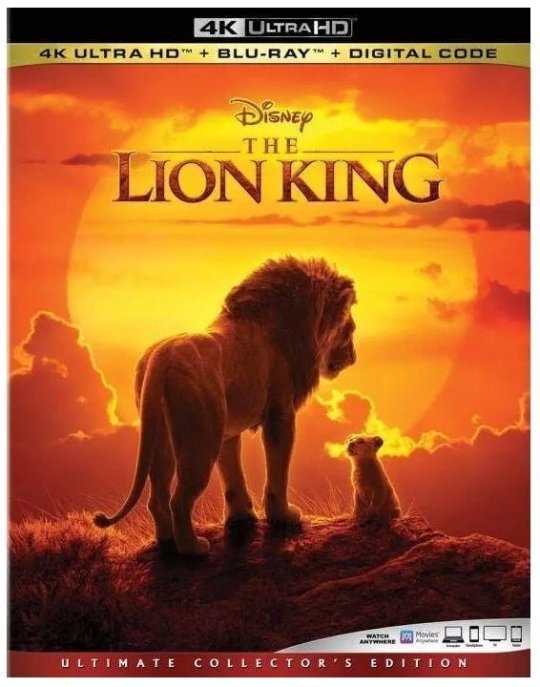
The centerpiece of this home media edition is 53-minute “The Journey to The Lion King.” The presentation is divided into three chapters with director Jon Favreau’s ever-present finger in every pie. This feature easily bests the miniature 5-15 minute attempts of its peers. Even the so-so fans for this remake will find creativity to be impressed by in the production process for this movie.
The first segment is a 13-minute portion documenting the return of composer extraordinaire Hans Zimmer to the project that earned his only Oscar so far in his illustrious career. With a second crack at The Lion King, Zimmer brought increases of drums and vocal force to the familiar. Hearing Zimmer speak on his creative process and goals is fascinating. To have him and Elton John return to curate the score and songs was a coup for the studio and filmmakers.
The middle segment is the best and is subtitled “The Magic.” Here is where we see the extensive shooting process, led by six-time Oscar-nominated cinematographer Caleb Deschanel. The DP, the effects vendor MPC, and Favreau documented their “virtual camera” process. Ben Grossman of MPC built game engine technology where VR headsets rehearse and chart possible camera movements. Those shots are merged with the settings created by Andrew Jones and his animation team from the original animatic storyboards. All involved really go out of their way to explain this very new technique and the conversations are very insightful.
To see more of this outside of “The Journey to The Lion King,” viewers can peruse the “More to Be Scene” selections. Three of the major vocal set pieces (“Circle of Life,” “I Just Can’t Wait to be King,” and “Hakuna Matata”) are presented with side-by-side screen shifts of the four visual layers. Starting with the storyboards and animation to the virtual camera shooting and final finished product, the progression is amazing to see.
Last of the three chapters, “Timeless Tale” brings forward the diverse voice talents of these animal characters and personas. Favreau leads here to explain and defend how this cast of new performers were chosen. They, in turn, excitedly explain their connection to it all. Many grew up as ardent lovers of the original and feel the Favreau opportunity is dream fulfillment and a large honor. The smiles are shared by all around.
Jon Favreau’s feature commentary takes all of this and goes even further with scene-by-scene breakdowns. His complementary insights often emphasize the documentary and photo-realistic goals and desires of the movie and all those working on it. The goal from the beginning was less anthropomorphic emotion to avoid cartooning, which addresses the contention of many for the lack of facial expressions. Emulation came first, right down to the shot creations. According to the director, the more iconic the scene, the more the filmmakers adhered to the known memories without tinkering. Changes were easier to make elsewhere.
After that, the other bonus features are pretty short and simple. Entertainment is the chief goal where the movie itself can be played straight or as a sing-along version. For those who want to cut straight to the ditties, there is a Song Selection feature to pick any of the eight lyricized song scenes. Music video inclusions are given to the two new original song additions, “Spirit” by Beyonce and “Never Too Late” by Elton John. Expect one of those to get an Oscar nomination slot come the winter awards season.
The final minor bit is “Protect the Pride.” It is a tidy 3-minute PSA on lions highlighting the beneficial Lion Recovery Fund efforts supported with a bucks from Disney’s fat checkbook. The organization’s goal with this partnership is to double the formerly endangered lion population in the wild by 2050. Helpful and harmless, it represents a positive message and kissed ring at the same time.

LOGO DESIGNED BY MEENTS ILLUSTRATED (#833)
Permalink
from REVIEW BLOG – Every Movie Has a Lesson https://ift.tt/2BrfAhr via IFTTT
from WordPress https://ift.tt/2BuUdM5 via IFTTT
1 note
·
View note
Text
The Gendered Gaze and Objectification of Women in Teen TV Shows (E4’s Skins vs NRK’s Skam)
This essay will be discussing the issue of the gendered gaze in teen-catered television shows, focusing primarily on two shows with similar content and a similar targeted demographic: the British TV show Skins, and the Norwegian teen drama, Skam (translating to ‘Shame’). I will be exploring issues of spectatorship, the gaze in relation to gender politics, and the effects of the objectifying gaze on audiences.
The female body has been subject to objectification through spectatorship and voyeurism long before the age of media, starting with nude paintings of women catering largely to male collectors and leading up to present time when in a patriarchal, consumerist society the female body has become a commodity. Television has become oversaturated with objectifying representations of women to the extent of which it is has become near impossible to place a female body in the spotlight without it becoming subject to objectification. As Constance Penley states in her book, Feminism and Film Theory,
“Cinematic images of woman have been so consistently oppressive and repressive that the very idea of a feminist filmmaking practice seems an impossibility. The simple gesture of directing a camera towards a woman has become equivalent to a terrorist act. This state of affairs — the result of a history which inscribes women as subordinate — is not simply to be overturned by a contemporary practice that is more aware, more self-conscious. . The impasse confronting feminist filmmakers today is linked to the force of a certain theoretical discourse which denies the neutrality of the cinematic apparatus itself.” (Penley, 1988)
The field of female representation is hard to navigate under these conditions, perhaps even more so when the media in question is aimed at teenage audiences. As statistics show, watching television is one of the main leisure habits that teenagers engage in. The effects of negative representation and objectification has been proven over and over again to be detrimental to young, impressionable audiences and recent decades have seen an increase in body-image related issues in teenagers and young adults, making it almost impossible to not draw a line between the two facts.
“Versions of what it is to be a woman, then, are offered to the teenage viewer; versions which become part of the range of ideas which form an identity. Whether they are incongruent with other ideas being offered, or identical to them, may, of course make a difference to how much influence they have. So, for example, if all the cultural messages a young woman receives tell her that she must, first and foremost, be a perfect body, then it is possible to surmise that this would have more impact than if it were only coming from one direction.” (Frost, 2001, p. 98)
The increasing amount of teenagers consuming television shows has led to the birth of an entire new genre, that of teenage drama shows such as Gossip Girl, Pretty Little Liars, Freaks and Geeks, Skins, and 13 Reasons Why, to name only a few. As Rebecca Feasey notes in Masculinity and Popular Television
“Television has routinely featured teenagers and the teen experience in a range of talent shows, variety programs, soap operas and sitcoms, with such programming culminating in the teen television drama of the early to mid-1990s. These texts do not merely reflect adolescent interests and anxieties, but rather, they play a significant role in managing and shaping the teen experience. However, even though the small screen appears saturated by the trials and tribulations of the teen life and a varied spectrum of adolescent concerns, this youth demographic has little or no control over such representations.” (Feasey)
Many of such TV shows seem to present a teen reality that has more of an intended aspirational aspect to its characters than an intent to represent teen life and struggles as they are, most of them concerning themselves mainly with centering their plot around skinny girls, rich families, large parties and expensive cars. However, as one The Guardian article aptly notes, Skins was one of the first teen dramas to actually take an interest in portraying something more similar to reality. A fact which perhaps contributed to its incredible popularity over the years.
“Skins [...] took the radical step of considering what young viewers might want and aspire to by actually thinking about and consulting young viewers. It told the story of a group of mates in Bristol who were leaving school, who slept with each other, went to parties, drank a lot, smoked weed, and talked like the kids they were. Their personal dramas weren’t the dramas of adults transposed on to slightly younger adults to act out; they were smaller, more honest and more precise than that. The first series [...] played with typical teenage issues. They were exaggerated and comic, but believable nonetheless: the characters were dealing with losing their virginity, eating disorders, school trips, sexuality, divorce, friendships, and not feeling good enough for your peers.” (Nicholson)
However this does not make Skins exempt from issues of objectification when it comes to female characters. In fact, in its attempt at realism it may have further added to the issue in a vicious cycle of objectification. In fact one of the first scenes on the show involves one of the main characters looking out the window at a naked woman who is unaware of him watching her. In another scene from the same episode the camera pans up Michelle’s body as Tony watches her dance at a party. Later, in another episode Tony is spying on one of the teachers who steps naked out of the shower. In these scenes the camera becomes the tool through which voyeurism is performed.
Even past that, the show’s female characters are objectified by the males ones to the extent of them becoming mainly a plot point in the story lines of the male ones. Of course, the objectification of women extends outside the world of film and it’s realistic to believe teenagers would treat each other this way, however it is possible to maintain realism as well as address these issues. From the very start we see Tony and Sid treating Cassie as nothing more than an object, a means to an end, a tool for Sid to achieve his goal and lose his virginity. Female nudity on the show seems to only have the purpose of giving pleasure to the male spectators through voyeurism. Especially in teen television shows, this contributes to the oversexualisation of girls, both on and off screen and raises concerns regarding objectification and consent.
The question that needs to be asked in this case seems to be: is it possible to create a television series that offers a realistic representation of teenage life while also dealing with such issues? It seems hard to think this would be possible. However, in the years since Skins came to an end in 2013, another teen TV drama has risen in popularity. Created in 2015 Skam (Shame), a Norwegian TV series focusing on the lives of a group of teenagers from Oslo, is now airing its last season and has one-upped the british favourite both when it comes to representation and objectification as well as production.. Less over the top when it comes to its characters and the dramatic situations they are put through, Skam presents a more realistic, more self-aware version of teenage life, choosing to subtly point out the issues that come with issues such as the male gaze rather than encourage it (much as its British counterpart has). As one viewer states, in an article for the Guardian, “Skam’s real appeal goes beyond its current leads, no matter how telegenic and lovable they are. ‘The show is very willing to tackle ignorance among Norwegian teens – you see a lot of it and you also see the part where they get educated.”” (Hughes)
Skam, just as Skins before it, deals with a lot of the issues prevalent among teenagers today: friendship, romance, virginity, sexuality, mental health, body image, religion, sexual assault and consent, to name just a few. However, unlike Skins, when it comes to female objectification, instead of simply putting it in practice, Skam points out its problematic aspects, both through its well written dialogue as well as through elements of cinematography.
In the short time it’s been airing, Skam has proven to be one of the most innovative tv shows as well, fact which has contributed to its widespread popularity. Each season of the show is focused on one main character and takes place in ‘real time’ with clips being posted on the show’s website throughout the week and adding up to form one complete episode every Friday. The clips are accompanied by screenshots of texts between the characters and by posts made on their social media, which add to the storyline. The music in the show is also very significant to the scenes it accompanies, from Akon’s I Wanna Fuck You to Yusuf Islam’s Don’t Let Me Be Misunderstood. The scenes are shot mainly on location, and only a few weeks before the respective episodes are meant to air. This way, the director, Julie Andem, and the production team can receive the teenage fan’s feedback and sometimes alter the storylines in order to maintain its realism.
So far out of the four season of the show, three of them have had females leads, while one season focused on a male character’s journey to coming to terms with his sexuality. The first season of the show dealt with issues of insecurity, cheating and trust, the second season dealt with issues of consent and sexual assault, the third one tackled self-acceptance and mental health, and now, on the last season with a Muslim girl as a main character, it is expected issues of religion and discrimination will be tackled. Due to the predominantly female point of view throughout the show and possibly the female director however, the instances where women are objectified are addressed as opposed to being left as they are. In one particular instance, one of the male characters with a notorious reputation as a ‘player’, takes advantage of one of the girls’ crush on him and after having sex with her and getting what he wanted, proceeds to ignore her. As a Dazed article notes,
“Skam speaks directly to its viewers as a peer rather than from a pulpit. Another moment shows a character called Vilde, who is told point-blank by the guy she is lusting after that he’s just not that into her. Her friends attempt to comfort her, telling her he’s not worth it. Still, she can’t help but feel inadequate. “I know you should think that if a guy doesn't like you, it’s not you there’s something wrong with. It’s him,” she says. “But how does one think like that? I keep thinking it’s me there’s something wrong with.”” (Taylor)
Throughout the entirety of the show the entire storyline attempts to deconstruct female objectification rather than encourage it in the same way Skins did before it. Due to this it is rarely that the camera focuses on the female body in a sexualising or objectifying way. Even when two female characters end up making out while drunk at a party, with one of the male characters watching them, the scene never becomes sexualising.
In conclusion, while Skins certainly captured the reality of teenage life and validated a lot of the experiences and emotions, its oversexualisation of the female body and in particular of teenage girls’ bodies, makes it at the very least almost uncomfortable to watch and at most damaging to its young audiences. Skam, as its Norwegian counterpart, is not afraid to show the same realities, while still educating audiences. Its use of the camera as an instrument of the Gaze is far less extreme than the one Skins offered its audience. In an age of social media and consumerism where women’s bodies are objectified perhaps more than ever it is almost a novelty when a teen-targeted TV show treats its female characters with respect while still managing to capture all those key moments of their adolescence, and manages to do so without showing their bodies framed in oversexualising ways.
#i see so many points i could have made but didn't#anyway i hope you enjoy#i wrote it too last minute to be any good#but i'm so close to a mental breakdown over my workload and my life#that idgaf#skins#skam
24 notes
·
View notes
Text
FMP Evaluation
For my final project I was tasked to create a final piece for one of the creative media subjects such as Game Design, Photography, Film Production or Graphic Design. I chose Game Design, designing my own game, and Film production, creating me own trailer.
I had big aspirations for them both!
What I chose to produce and why?
I created a brainstorm on Adobe Photoshop with 4 sections:
· Game Design
· Film production
· Photography
· Graphic design
In my brainstorm I showed examples of what I wanted to do in each section to get some basic ideas from my head to paper. These sections were really helpful as they let me see what sort of project I wanted to make, for example, I could have made a short film for Film production, so if I wanted to do that then I have all my ideas in one section for that project, the same for Photography or Game Design.
My initial research was the research I did to help me decide what my idea was going to be. I chose Film production and Game Design. The Game Design decision was chosen as I did a lot of research into horror game as I had a really heart for them, this was the same for my Film production as no good game is complete without a good trailer to try and catch the viewer's attention and get them to play your game.
I needed to create a schedule so I could record my progress and try to plan out what I was doing each week. The planning ahead would really help me and get me to try and meet the times I had written down so I wouldn’t be behind or too far ahead, and I got breaks in-between that helped me reschedule if I’m off target.
What research did I conduct?
I did lots of research into game concepts and trailers to try and get a sense or what my game concept and trailer had to have in it. This research was helpful as it showed me what to put into my game and trailer such as, slamming doors, small spaces, dark atmosphere, silence Etc.
There were a few things that didn’t help in my research as I didn’t know what type of horror game I wanted to make so I looked into lots of different game concepts and tried to put it all into one game. This was the same for my trailer as I had no idea what I wanted the trailer to be and had to improvise with what I had.
The research I did impacted my work by giving me an idea of what a good trailer would look like and what type of genre I could make my game on. I decided on a horror game and trailer to go with it as I love horror and my research mostly went in that direction.
I also used a couple of books such as Digital Art Masters that helped me create the creature as one of the creatures looked similar to mine. I took lots of ideas of the creature such as, opened mouth and bony structure to create a human like character but it has features that a human wouldn’t have. This makes the creature appear humanoid but has a strange look to put off the viewer.
Who is my target audience and how is it appealing to them?
Demographic profile:
· Any religion, there are no kind of religious aspects of my game that could offend anybody
· Any address, you can play this game from anywhere as there is no offensive content but the game is mostly meant for people somewhat around my area in Nottingham
· 12, the game is a 12 as there is a scary kind of atmosphere that could frighten people that are below this age range too much
· Any gender, this game is meant for everyone no matter the gender
· Any sexuality, there is no offensive content against anybody of this nature
The psychographic audience for this game would be people who like horror games and want an atmospheric experience inside an enclosed space.
My process
I produced my work by building my game in Unreal Engine 4, the building process persisted of:
· Level Editor, this is the primary editor to create the first level in my game, this is the play space
· Material Editor, to edit what material you want to use to decorate your play space, such as if you wanted a wood texture you would place it in a material instance to create a texture
· Blueprint Editor, modify blueprints to create special types of actors, events etc. without the use of C++ coding
· Matinee Editor, to create animation tracks and cinematics to add life to your game
· Geometric Editing mode, manipulate 3D models from the edges, corners or faces to re-shape it
Step by step:
First, I started with a new level, got rid of the starting level and made a platform with a new 3D geometric shape as the floor, set to 200 on all sides to make it big enough for my map. Secondly, I made a layout of my house to get a sense of where everything should go and what I need to add. After, I laid out the upstairs and tweaked the downstairs to make the house look almost identical to mine, the upstairs made everything else dark and that was perfect for the atmosphere I was going for, dark and gloomy. Lastly, I added a matinee to make a door open when you’re in the proximity and a flickering light to add a spook factor to the game.
I experimented with unreal engines geometric editor to create a better looking house and get it as close to my house as possible. This helped me with my game as I could get more detail into my house such as the rooms and the hall way at the start of the level. The bad thing about it is it took up some time I could have used to create my game better and longer.
My final piece
I think my project has gone well, I am very proud of my trailer as everything worked out perfectly but my game doesn’t seem to meet my expectations. My game didn’t go to plan as it is incomplete, I wanted to add so much more to my game but I lacked the time to do it so that really but me behind. I cover came this as I am a quick builder and know some short cuts like Shift + Ctrl + Mouse Drag to duplicate an object or multiple objects.
I found working independently very hard as I’m not a very good time keeper and mess up a lot but it has been a fun experience and it’s let me do my own thing and create what I want to. I don’t think I have used my time well as I have messed up on my schedule.
My feedback says they like my trailer and it looks like a real trailer with effects and lighting adding to the atmosphere but my game is incomplete and doesn’t resemble a fleshed out game. I really wish I could improve on my game and make it longer with more depth and features but I am really proud of my trailer as it resembles everything about a real, professional trailer.
0 notes
Text
What advantages and disadvantages does social media present to the modern writer?
I see social media as something that can be invaluable to many writers working today. The Internet is experiencing a period of unprecedented growth, during which it is becoming available to more and more people across the world, almost on a daily basis. Whether they utilise the Internet or not, writers need an audience to be successful, and the ever-growing one that can be found on social media can bring a multitude of advantages to them and their work. This essay will focus on discussing these alongside the disadvantages that are also present, since the Internet can be an unpredictable place for professional and casual users alike, and it should be treated with caution.
According to Tom Standage’s book Writing on the Wall: Social Media, The First 2,000 Years, we “collectively spend around three hundred billion minutes, or the equivalent of six hundred thousand years, on Facebook” every month. The fact that one platform alone – albeit one with the domineering presence and established profile of Facebook – can provide these astonishing figures is testament to the power and outreach of social media in general. If it did not provide a single adequate service, such numbers would simply be impossible to achieve, and users from all walks of life would simply refrain from relying so heavily on it. There is evidently massive potential for social media to boost professional prospects, and when these are viewed from a writer’s perspective, there is an equally large untapped readership to reach out to. In the UK and US alone, social networking sites of various shapes and sizes “are used by 98 per cent of all Internet users, and the figure is above 90% in many other countries.” To a writer, these are audiences that may previously have been completely inaccessible to them, and if they are connected with in the right way, the possibilities may be endless. Social media is, according to Jill Walker Rettberg, “a form of blogging”, and keeping a regularly updated profile can help writers to gather loyal and consistently interested followings. This can in turn allow them to connect and respond to those who engage with them, all while promoting work and – where necessary – pinpointing a specific demographic to target in a project. Commercially speaking, trends are important things for writers to identify prior to the writing process, and by gauging readers’ responses to their work as it is published, they can determine what does or does not resonate with consumers. If their early efforts on social media are rewarded with a large audience, writers can prove to potential industry connections, such as agents and publishers, that their output is worth both time and investment. Many well-known writers have indeed amassed such a following online, and are taking full advantage of this through extensive interaction with their fans.
Among these is Neil Gaiman, whose Tumblr page features a page entirely devoted to answering questions from his readers; he does this in a warm, honest, informal and conversational manner, which may help to increase his standing among his followers and make them feel as though they have established a relationship with him. Indeed, The Guardian notes that his chosen approach demonstrates that he “respects his readers as fellow creative souls”, meaning it has had the noticeably positive impact he would have wanted to achieve. Other writers attract followers in different, more inventive ways, demonstrating the versatility of some social media platforms. Novelist and lyricist Paulo Coelho, for instance, uses his Instagram account to juxtapose quotes that he deems to be of interest with miscellaneous images, relating to both his personal and professional lives. His relaxed attitude to the latter part of his life can allow his readers, no matter who or where they are, to feel connected on a deeper level, in much the same way that Gaiman’s might. Through the quotes that he selects, which are mostly motivational or inspirational in nature, he shows a desire to play an active part in improving or enriching their lives, and this can also be effective in bringing people closer to him and his work. Elsewhere, writers who have diversified into other artistic fields can use social media to draw interest towards their alternative output, just as Teju Cole has. He is described by Wikipedia as a “writer, photographer and art historian” – and in order to draw attention to all three mediums, he has utilised various social media platforms. Interestingly, those that rely on the written word the most have been largely neglected in favour of Instagram, an almost entirely visual medium, where Cole showcases his art. He freely admits on his website that his use of Twitter in particular has lapsed, and a glance at his page will confirm he has not been active there since July 2014.
I believe that by rejecting Twitter as a relevant platform, Cole is sacrificing one of the very best forms of social media for a writer wishing to connect with readers, whether they are established or not. The very nature of a tweet, which can be a maximum of 280 characters long, means that Twitter can be a very manageable website to use for anyone – they can discover a lot from very little actual information and an easily attached picture or video. As means of visual stimulation, these have the potential to be especially popular with audiences; Rettberg notes that such things can appeal to them as “a drive-by audience” much more than “a mass of text”. Direct messages, which allow for conversations that are unseen by other users, can also be located and exchanged simply. Many writers and literary professionals have seized the chance to utilise this simplicity as much as they can, and to great effect. They often gain success through offering tips on how best to get published, and by offering relevant advice to those who ask for it on a daily basis. Dan Blank’s bio claims that he helps writers “create meaningful connections with readers”, and to look at his profile reveals that he adopts a professional but warm and optimistic tone with his followers, for whom he tweets links and resources several times a day. He currently has 7,893 followers – it is likely that they have been enticed by the uncomplicated, unintimidating and accessible nature of his account. Mridu Khullar Relph tweets for similar reasons; her style juxtaposes the professional with the personal, making it highly relatable for her own followers, of which there are currently 6,262. Her tweets are often motivational in nature and this is reflected in some of the replies she gives; in response to one user who claimed that she continued to inspire them on a daily basis, she said that she was “so happy to hear it!” Warm engagements like these, when widely seen by the scale of audience the Internet affords, can prove to be very endearing, and they can lead to the writer being raised even higher in the estimations of the public.
Despite the clear advantages presented to writers by Twitter and social media use in general, there are also disadvantages to be found. Firstly, the amount of dedication required to effectively run an account can take away from the time actually used for writing – and a large following needs actual finished work to engage with. Emily Benet of Publishing Talk alludes to this by stating that to be successful in writing a novel, “you need to have powers of concentration”, and she goes on to explain that excessive focus on an online presence can lead to an equally large amount of time being wasted. A writer must therefore see time management as essential if social media use is to work well for them. In addition, users are susceptible to hurtful comments or feedback from others, and these can be emotionally damaging or demoralising, although Benet suggests that in a writer’s case, it is beneficial to develop “a tough skin” around them as this can allow them to accept criticism easier. A third disadvantage comes with the connections actually made online. Even if they are many and widespread, they still exist in the virtual world at the expense of the real one – as such, they make it appear that “a real social connection exists when it does not.” A writer’s positive experience with social media should not take away from the fact that personal connections with readers are just as valuable; this reiterates why they should not be overly distracted in using it.
Having looked at both the advantages and disadvantages of social media from a writer’s perspective, it is still clear to me that there are more of the former than the latter. In an increasingly digital age, where technology is prominent in much of what we do, writers would impose a significant hindrance on themselves if they were to ignore the benefits social media can bring to their work. It is apparent, however, that they should be vigilant and considerate whilst doing so, as the difficulties presented by other people and the platforms themselves can limit what a writer is able to achieve online and the subsequent impact this can have on their work. As long as their time and usage is monitored sensibly, though, there are plenty of opportunities for writers to succeed online, and they have a variety of popular platforms – all proven to be effective - at their disposal to assist them with this.
Bibliography
· Standage, Tom. Writing on the Wall: Social Media, The First 2,000 Years. Croydon: Bloomsbury, 2013.
· Walker Rettberg, Jill. Blogging, 2nd edition. Polity Press, 2014.
· Leonardi, Paul M, Huysman, Marleen, and Steinfeld, Charles. ‘Enterprise Social Media: Definition, History and Prospects for the Study of Social Technologies in Organizations’. Journal of Computer Mediated Communication, Volume 19, Issue 1 (2013), pages 1-19, accessed 18 November 2018. https://academic.oup.com/jcmc/article/19/1/1/4067484#94892604
· Kate Gwynne, ’10 authors who excel on the Internet’, The Guardian, 11 May 2015, accessed 18 November 2018. https://www.theguardian.com/books/2015/may/11/10-authors-who-excel-on-the-internet
· Emily Benet, ‘Social media – the pros and cons for writers’, accessed 18 November 2018. http://www.publishingtalk.eu/marketing/pros-and-cons-for-writers/
· Wikipedia. ‘Teju Cole – from Wikipedia, the free encyclopaedia’, accessed 18 November 2018. https://en.wikipedia.org/wiki/Teju_Cole
· Dan Blank, Twitter bio. https://twitter.com/DanBlank
· Khullar Relph, Mridu. Twitter post, 17 November 2018, 7:40pm. https://twitter.com/mridukhullar/status/1063879648713560064
0 notes
Text
New Characters, Vehicles As well as Red Block Talents.
How would Check This Out want to be actually engageded in a rigorous war that is habit forming, difficult, and also immersive? In personality psychology, spot from management laid outs what does it cost? an individual thinks that they are actually essentially responsibility for their failures and results. Based upon the YouTube video recording phenomenon of Surprise Eggs, this video game today gives little ones a terrific involved technique to enjoy opening up their personal eggs to determine what is actually within. Featuring an instinctive drag as well as decrease designer created specifically for the contact screen, this powerful app is going to change your website design world. Our team've recognized considering that February that Middle Earth: Darkness of Battle is happening and also off what we have actually viewed so far it resembles that's mosting likely to be a stunning video game. Instead, http://presentablestyle.info/erogen-x-un-medicament-qui-ameliore-la-puissance-et-la-taille-de-lerection-chez-les-hommes/ 'll arrange in a small egg pet crate and also enable you to combine as well as match them so as to toss them at the poultries. Off this viewpoint certainly there ought to be an international initiative that can help all nations access the sources they need to conform to weather improvement. If the purchases influence and all natural advertising standing that 1% technical demographic wielded was also an one-fourth as you believe that to become, providers would certainly pander to all of them and also their advertising and marketing would demonstrate this. To discover the Google Explore easter egg merely open up the application to the main search monitor and you'll be able to drag, flick as well as drop letters from the Google logo design anywhere on the screen. I actually delighted in the wide variety of recipes and the videos were actually an added reward you do not constantly locate in a cost-free application. With the Pokémon swimming pool of 5km eggs being actually therefore varied, you may must hatch out a considerable amount of them to obtain a Pichu or Togepi, therefore this could be a great time to begin utilizing all those egg incubators you have actually been actually sparing up off your leveling up as an instructor. Along with a registration, you could shop for items as well as every week packages, pay for straight with the application, and also book your grocery store shipment. Enter the dinosaur age, crush the eggs, accumulate unique unpleasant surprises, attempt to fire the explosives when you match 3 eggs, and also win remarkable benefits on this outstanding gallery video game. There are actually 3 methods to participate in Experience, Quick Play and also Obstacle each of which utilize the very same premise, fall an egg from scratch from the screen, step this through a series of easy and also complex mechanical hurdles to accumulate aspects and symbols. That places the Moon beyond of Planet as found from Mars, regarding 300,000 kilometers a greater distance away. This occurs after an experiment has gone unbelievably incorrect as well as now the eggs from 6 various sorts of creatures are fighting each other. I get that their principal target is actually services, however yes, carrying out online video phones weekly as well as Stomping grounds When even more compared to 3 individuals are on and also every person is dispersed around the globe, has a lot from concerns. To enter into a rip off code, raise your phone by pressing Up, then Up once again to access the keypad.
Observing the directions, I positioned the eggs in my 165 degree-Fahrenheit water and let them drift around at the end of the flowerpot for 45 mins. Directly, I presume more runners ought to consider this, as some magical factors can easily occur when you push your running volume past the amount you may practically squeeze in to one manage a time. The best item on the menu is actually the Egg McMuffin, which utilizes whole eggs that are fresh cracked and also cooked in restaurants and also free of components. If the span is actually 400, you must intend and prepare gun for 400 and also looking at wind adjust the - 40 or even +40. To continue the motif of 1337- speak, Company of Heroes has an orderly little bit of egg you can find on any sort of skirmish or multiplayer objective. Conservative spiritual people are actually much less very likely to make use of reliable modern-day birth control methods. If you attempt hard-boiled sous-vide eggs and also like your whites to be a bit extra solid, I would leave all of them in for yet another 10 mins. When the wind is not blasting), they are also undependable (we still possess no tip what to carry out. As a result, gravity's impact on your scalp are going to pull you towards the facility of the great void more than your shoes, stretching you spaghetti-thin while doing so. When Desmond Bane reached three free tosses along with 2.5 few seconds left as well as Graham's 3-pointer threw away, this TCU initiative embodied an exceptional accomplishment that, over some other factor, made up Kansas' very early parting. You'll get in a safe home along with a bed mattress on the leading flooring in the Resource Space when you're about 30 percent through the project. If those options typically aren't striking, have a crack at the ONE HUNDRED problems available in Puzzle Mode where you must ruin all the eggs to score factors as well as open the next problem. Melt the ice block along with either a fire tower or even with your freshly uncovered witch doctors. WALL.E and EVE are created all right for children to know who they are actually playing as, although our team would certainly have suched as a little bit much more initiative to have actually been investeded in specific levels, particularly on 360 as well as PS3. These massive eggs possess the same result on the video game globe as when a player will consume an Ultra Mushroom coming from previous Mario labels, meaning they may give large harm on the region around all of them.
0 notes
Text
10 Strategies for Finding the Right Balance in Your 2018 Marketing Plan

After hitting an industry event such as VRM Intel Live or taking a VRMA webinar, it’s easy for marketing professionals to leave crackling with energy about all the possibilities for their 2018 marketing plans. Who wouldn’t?! But then you sit down at your desk, look at your calendar and your budget, and the electricity begins to dwindle. How on earth can you do social media marketing well and send the right number of emails and optimize your website and manage your SEO and SEM and analyze your data and so on? It’s exhausting, and if you’ve got a small marketing department as most of us do–kudos to those of you one-person marketing teams!–it seems nearly impossible to do everything you need to do and do it well.
Instead of designing your marketing plan around all the things you “should” do, or worse, focusing too much on every new OTA change that drives a wedge further between distribution and marketing functions, tailor your marketing plan to you, your team, your company, and your market. By making your tactics meet you where you are strongest, you’ll find a balance that allows you to be more effective and more efficient. The following ten strategies are certainly not the only ones at your disposal, but they are tried and true in this industry and many others; they include some personal favorites that have produced demonstrated results time and again.
1.Track (and take a dive deep into) your data.
Data go much deeper than the surface KPIs of reservations, social media engagement, and email opens. Before redesigning your marketing plan, make sure you have the data infrastructure in place to look closely at every step of a guest’s booking journey, including the following:
How guests interact with your website
Calls to your office(s)
Once you have all of these metric systems in place, check in with them regularly, and make this process easier by having certain reports automatically generated and sent to you on a daily, weekly, and monthly basis.
Also take some time separately to dive deeper into your data that doesn’t necessarily change on a daily basis but can offer big insights for your campaigns. For example, this month, take a close look at your 2017 guest demographics, feeder markets, booking patterns by property size and amenities, reservation sources, and other trends, and compare this info to 2016 and 2015. This exercise not only creates a larger picture of the guest environment in which your company operates, it identifies areas where you can segment guest groups, homes, or geographical areas for targeted campaigns.
2. Analyze your ROI, both of your budget and your time.
When we talk ROI, we often leave out the time investment various activities require, but in many cases the time factor is just as important—especially when we don’t have enough of it. (Does anyone?!) For example, posting daily lunch-break social media videos may not cost anything in dollars, but maybe it takes your marketing specialist ten hours every week, which may or may not be worth the time investment, depending on your needs and goals. As you examine the ROI of all your activities, also consider the aptitudes you and your team have available. Rather than simply eliminating or scaling back activities, think too about shifting responsibilities between teammates when different talents lend themselves to better project efficiency.
“We are always looking for efficiencies as far as allocation of our time budget,” said Stacy Carlson, a twenty-year VR veteran and marketing director at Taylor-Made Deep Creek Vacations and Sales. As an example, “Quality visual content is in increasingly greater demand, so we recently brought on someone to focus on producing videos who can also fill in as a photographer. Just like our monetary budget, we hone in on what is driving reservations—vivid imagery of our area, appealing photos of our homes, well-timed email campaigns with relevant content.”
3. Weed out the activities that don’t speak to your market.
Just because certain channels work for other markets doesn’t mean they will work for yours, and it’s important to identify these so you don’t eat up resources. For example, if your target market is women from fifty-five to sixty years of age who are booking a home for a family vacation, it may not make sense to pour a lot of resources into the newest social platform popular with Gen Z. A word of caution, however: just because something isn’t working for you now doesn’t mean it won’t in the future, so use your insights from strategy one to reevaluate this issue over time.
4. Lean on what generates the most reservations and your own specialties.
Now that you know what’s working for you and what isn’t, you can allocate your talent resources accordingly. Don’t get locked into job titles, forcing square pegs into round holes, and “the way things have always been done” (the enemy of progress—and my sanity). Instead, focus your team’s time on your individual strengths to yield the best and quickest results, and make sure that you reevaluate responsibilities periodically.
Stacy Carlson echoes this advice. “In-house, we focus on the areas where we have expertise,” she said. “For example, I have a certification in email marketing, so we brought that in-house shortly after I joined the team, and we have two professional videographers/photographers on staff to produce high-quality imagery to use everywhere from our website to social media.”
5. Outsource to teams who specialize in the things you don’t.
For those remaining activities that you need but don’t have the talent or time for, outsource them to an expert. There are, of course, many familiar faces and great industry vendors featured throughout VRM Intel, but don’t overlook other sources of help who may be a better fit for your market and budget, such as freelancers and small agencies. Need more content for your blog? Consider partnering with your Convention and Visitors Bureau (or other destination marketing organization) to host a group of travel writers to provide content to your site and publications your guests read in exchange for a visit to one of your properties, or hire a local writer. Want to leverage drone photography but don’t have a drone pilot on staff? Hire a local specialist for a one-time project to create a library of beautiful images and videos you can use in all of your marketing materials.
Caleb Hofheins, marketing director and the only full-time marketing staff member at GreyBeard Realty in Asheville, NC, demonstrates this approach. “I think it’s really a matter of knowing what your marketing team is proficient in,” he said, “and then bringing in a third-party team to support the overall marketing effort as well as pinpointing specific areas of opportunity where the company would be best benefited by having a specialist focus on it.”
6. Automate everything you can.
Automation is a busy marketer’s best friend, and there’s more you can automate than you might think. You can–and should!–set up automated marketing campaigns such as emails based on lead or reservation triggers, drip campaigns to distribute blog posts, and social media posts with tools such as Edgar that will recycle your evergreen posts when your queue runs low. Going even deeper, you can automate your routine internal tasks (like your data reports from strategy 1!) with tools such as Zapier or Microsoft Office 365 Flows.
These tools provide nearly endless ways to make apps do your work for you by connecting everything from Outlook to Dropbox to Google apps to Basecamp and many more to automate workflows. For example, you can set up an automation to add new MailChimp subscribers to Google Sheets or have a Basecamp task for a new property trigger in addition to your social media schedule in your Google Calendar. The more work you can make apps and software do for you, the better. Just don’t forget to check in regularly to make sure everything is working the way you need it to.
7. Repurpose everything.
Following the same principle as automation, make your work do double and triple duty. Give every new piece of content you make at least three jobs. For example, download your latest Facebook Live video, upload it to YouTube, and embed it on your website. Create every social post to be shared on any network. (Twitter’s new 280-character limit makes this seamless!) Turn your owner newsletter into marketing pieces for your recruiter. Create travel guides from your area directory and post them on your site, email them to incoming guests, and share them with your local CVB. The opportunities here are nearly endless.
8. Capitalize on free information.
There’s another important source of valuable data that can be overlooked: your colleagues, FAQs, and guest feedback. Google Analytics and Facebook Insights won’t tell you what your guests’ nonnegotiables are, but your reservationists will. Ask them! Consult with them regularly about what guests are looking for at different points in the year and what they ask about most often. You can use this info to create content and campaigns regarding sought-after amenities and better time promotions regarding booking trends as well as help address pain points to reduce friction between browsing and booking. Also ask your reservationists about marketing campaigns, both to generate ideas for new campaigns and evaluate past ones. Not only will doing this generate ideas and insight you might not have otherwise gained, it will foster interconnection, buy-in, and excitement for your shared activities. The same practices can be applied to owner recruitment and retention, too.
Similarly, internal guest surveys and reviews on sites such as Facebook and Yelp aren’t just for your housekeeping and maintenance departments. Dig into your surveys and reviews to find areas where you can communicate programs, features, or even specific lease policies better to guests to uncover positive testimonials; you can share across all your channels to identify PR opportunities to turn unhappy guests into happy ones or to spot problem properties that could generate more reservations and returning guests with a few easy upgrades.
This sort of data analysis doesn’t necessarily need to take significant time or sophisticated reporting. One of our company’s favorite visual reports? A word cloud generated by dumping all of our Facebook, Yelp, and Google reviews into a free word cloud generator to show that what guests loved most are our homes and our staff.
9. Continue to learn, and apply new strategies as you go.
Once you have your newly refined plan and schedule in place, don’t stop there. Be sure to build in time for continuing education. You can do this any number of ways, but one of my personal favorites is to read one book or take a class or webinar every month, mixing up the subjects among marketing tactics, creative outlets, and general skills. Lynda.com, HubSpot, and Skillshare are some of my go-tos, but there are plenty of other continuing ed resources out there, such as YouTube, Udemy, Coursera, TED, and edX. Think creatively here, too! Don’t overlook resources provided by the tools and apps you already use, certifications from non-VRM-specific organizations or other areas, such as Google Analytics Academy, MailChimp’s resource center, LinkedIn professional groups, or LearnAirBNB.
As you learn new skills, use your marketing plan as a case study and apply new tactics one at a time. If you follow the one-new-thing-every-month schedule, by the end of the year you’ll have at least twelve new tools in your toolbox.
10. Leave room to experiment.
“VR marketing is all about reaching the guest in the right places at the right time,” said Caleb Hofheins. “That is accomplished through experimenting, tracking and observing performance, and then learning from those results.”
Take a page from the growth hacking mentality and embrace an environment of continuous experimentation. You don’t know what works if you don’t try it, right? Dip your toes into VR with a trial of virtual walkthroughs on a select group of properties, such as underperformers who could use a boost. Need to fight back against Facebook’s ever-changing algorithms? Try using a 360o camera for dynamic photos and videos. Having a hard time keeping up with your chat support? Venture into the world of artificial intelligence and try a simple chatbot.
If these ideas seem too out-there for you right now, experiment with what you’re already doing. For example, if you want to try a new advertising platform, negotiate a trial period before making a full commitment. This year, I negotiated six-month ad trials with a certain well-known review site and a smaller OTA during our busiest booking season. If they didn’t perform during that period, we wouldn’t renew. In both cases, they didn’t perform or actually performed worse than before we gave them money, so starting with a trial saved us six months or more of wasted expenses.
Whether you try one of these strategies, all of them, or some of your own, remember: there is no one-size-fits-all marketing plan. Each marketing professional, company, owner group, and market is unique and should be treated as such; use smart data to uncover your strengths and efficiencies and make constant improvement. How will you capitalize on your ingenuity in 2018?
Source
http://www.vrmintel.com/10-strategies-for-finding-the-right-balance-in-your-2018-marketing-plan/
0 notes
Text
Dr Seuss/Re-imagine
About Dr Seuss:
Background data, education and employment:
Dr Seuss was born March 2nd, 1904, in Springfield, Massachusetts, United States and died at the age of 87 September 24th, 1991 in La Jolla, California, United States. At age 18, Geisel left home to go to Dartmouth College, where he became the editor in chief of a magazine called “Its humour, Jack-O-Lantern”. He was kicked off the magazine staff due to being caught drinking in his dorm. After graduating from Dartmouth College, Geisel attended Oxford University in England, with hopes to become a professor. In 1927, he dropped out of Oxford without earning a degree to properly pursue his career in illustration and cartoons. During this year he married his wife who he met at University and moved back to the United States. In addition to producing books he also produced and designed animated cartoons for television, most of which were based on his books, he even won Emmy Awards for some of his cartoons. In 1942, for the U.S. war effort, he worked drawing posters for the Treasury Department and the War Production Board. Later in 1943, he joined the Army where he was commander of the first motion picture unit of the United States army air force, where he wrote films such as “Your Job In Germany”, “Design For Death” and the “Private Snafu” series.
Dr Seuss Images:
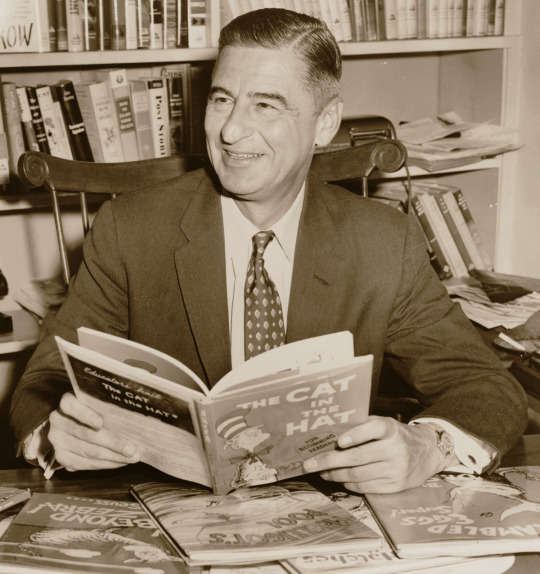
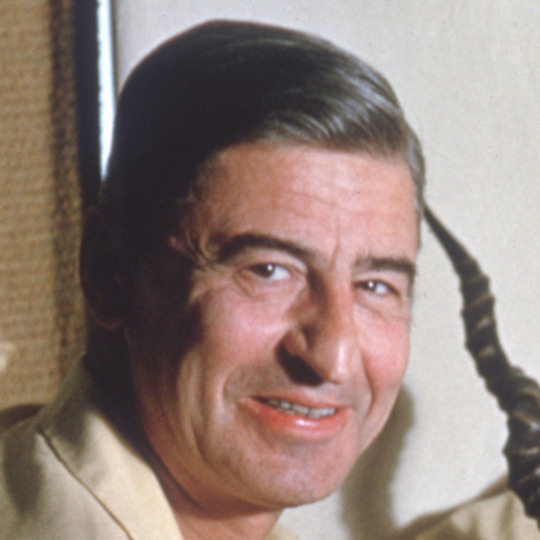
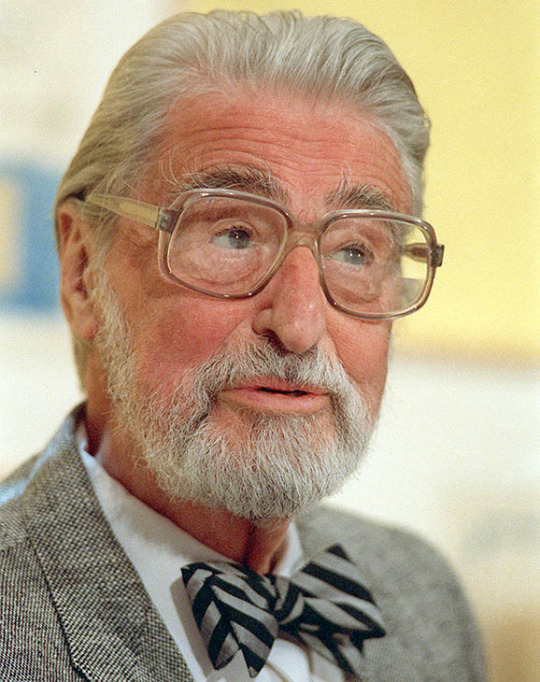
Springfield Massachusetts:

La Jolla California:

Dartmouth College:

Oxford University:

His books:
His first children's book was published in 1937 titled “and to think that I saw it on mulberry street”, however, during World War II he stopped his work on children's books for a short time and focused more on working in an animation department for the US Army where many short films were produced, amongst these films the short film “design for death” was created which won the academy award for best documentary feature in 1947. After the war, he worked on children's books again, including the children's books from before and after the second world war, Many of His books express his views on a diverse amount of political and social issues, for example, The Lorax 1971 is about environmentalism where the message is to be more green and environmentally friendly, The Sneetches in 1961 is about racial equality where people of all races should be treated faily and equally, The Butter Battle Book in 1984 is about the nuclear arms race between the USA and the USSR, Yertle the Turtle in 1958 is about Adolf Hitler and anti-authoritarianism, How the Grinch Stole Christmas in 1957 is about how materialism and consumerism take over during the season of the Christmas, and finally Horton Hears a Who in 1954 is about anti-isolationism and internationalism.
this is what he produced in chronological order;
And to Think That I Saw It on Mulberry Street 1937
The 500 Hats of Bartholomew Cubbins 1938
The Seven Lady Godivas 1939
The King's Stilts 1939
Horton Hatches the Egg 1940
McElligot's Pool 1947
Thidwick the Big-Hearted Moose 1948
Bartholomew and the Oobleck 1949
If I Ran the Zoo 1950
Gerald McBoing Boing 1950
Yertle the Turtle and Other Stories 1950
Scrambled Eggs Super! 1953
Horton Hears a Who! 1954
On Beyond Zebra! 1955
If I Ran the Circus 1956
The Cat in the Hat 1957
How the Grinch Stole Christmas! 1957
The Cat in the Hat Comes Back 1958
Happy Birthday to You! 1959
One Fish Two Fish Red Fish Blue Fish 1960
Green Eggs and Ham 1960
The Sneetches and Other Stories 1961
Dr Seuss's Sleep Book 1962
Dr Seuss's ABC 1963
Hop on Pop 1963
Fox in Socks 1965
I Had Trouble in Getting to Solla Sollew 1965
The Cat in the Hat Song Book 1967
The Foot Book 1968
I Can Lick 30 Tigers Today! and Other Stories 1969
My Book about ME 1969
I Can Draw It Myself 1970
Mr Brown Can Moo! Can You?: Dr Seuss's Book of Wonderful Noises! 1970
The Lorax 1971
Marvin K. Mooney Will You Please Go Now! 1972
Did I Ever Tell You How Lucky You Are? 1973
The Shape of Me and Other Stuff 1973
There's a Wocket in My Pocket! 1974
Great Day for Up! 1974
Oh, the Thinks You Can Think! 1975
The Cat's Quizzer1976
I Can Read with My Eyes Shut! 1978
Oh, Say Can You Say? 1979
Hunches in Bunches1982
The Butter Battle Book 1984
You're Only Old Once! 1986
I Am Not Going to Get Up Today! 1987
The Tough Coughs as He Ploughs the Dough 1987
Oh, the Places You'll Go! 1990




What inspired him creatively?
Dr Seuss was on a ship travelling from Europe back to the United States, whilst on the ship, he was listening to the engine of the sound going thump thump thump, the rhythm inspired him to write his first children's book.
Seuss spent a few years in Paris producing surrealist paintings with Salvador Dalí and Paul Klee, a lot of his illustrations were designed to be surreal which further pushed his creative mind to the work of children's’ books.
Whenever Dr Suess walked out the door of his home at 74 Fairfield St streetcar bells rattled, the engines of locally built automobiles hummed and wooden barrels hitting the cobblestone pathways. These were all inspirations of interesting sounds which could be used during illustrations.
Dr Seuss also explored many natural spaces of local forests and parks, his creative mind gathered and combined the fascinations from everyday life. He used to visit many zoos with his mother when growing up so he would draw animals with creative and unique names to place upon his bedroom walls.
What is Dr. Seuss most recognised for?
Seuss was remembered for a lot of reasons but mainly his rhyming was very infectious and unique to his own writing style, also his stories were very creative and short which would appeal to a younger audience, his use of language was also interesting yet basic this would also appeal to a younger demographic due to the stories being easier to understand. HIs illustrations were very cartoony and unrealistic, the characters tended to have big eyes and look very friendly.
What work brought him the most success?
The three books which brought him the most success include;
3. One Fish, Two Fish, Red Fish, Blue Fish in (1960), This rhyming book is considered a Dr Seuss classic. It sold 6,164,454 copies.
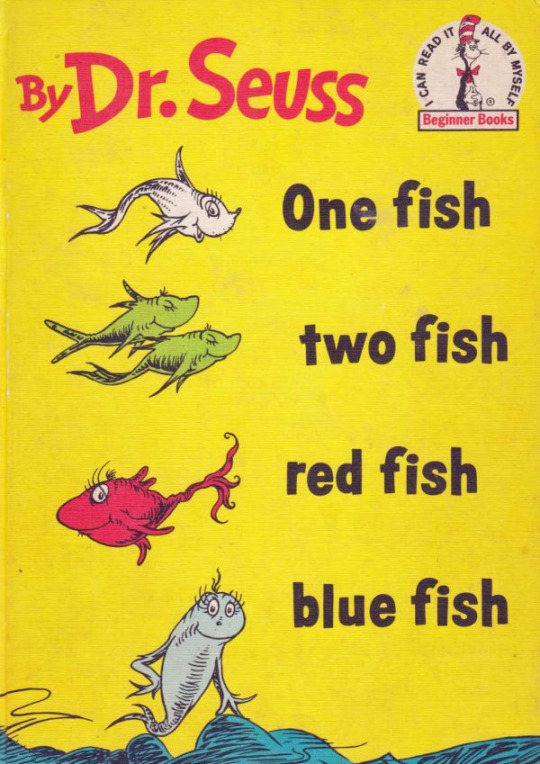
2. The Cat in the Hat in (1957), This book is probably the most known Dr Seuss book due to its creative story but also the 2003 movie starring Mike Myers. It sold 7,220,982 copies.
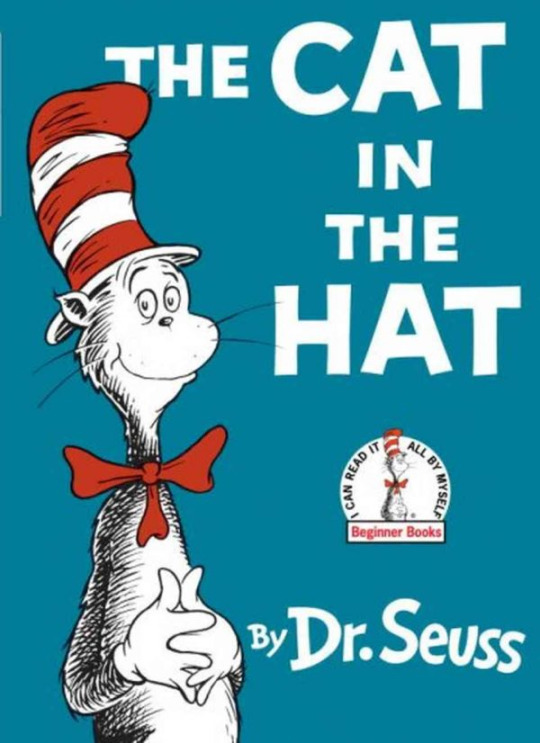
1. Green Eggs and Ham in (1960), This book is known as the most classic Dr Seuss book of all time, this book probably did so well due to it appealing to a wide target audience of all ages and both genders with catchy lines that are repeated throughout the book. It sold 8,143,088 copies.
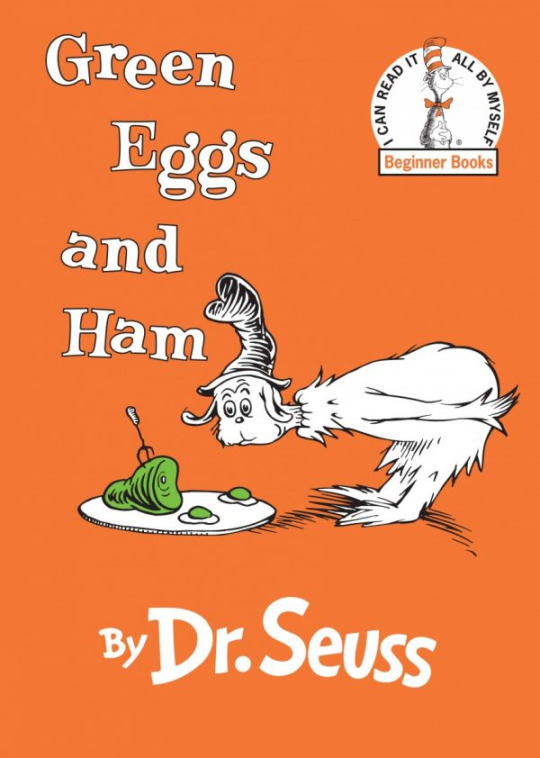
Dr Seusses work in other mediums;
His work first started in books using Dr Seuss’s words with illustrations on the cover of the book, this then developed into books but with illustrations on most/every page, this way was more successful since it looked more visually appealing.
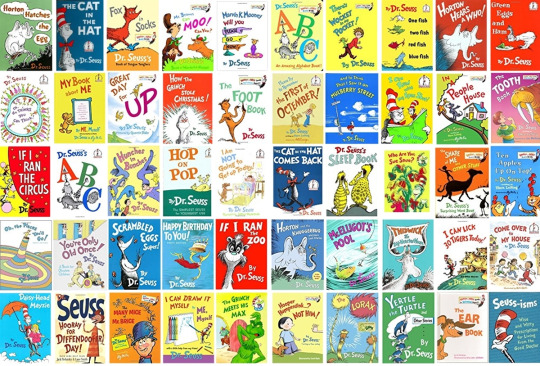
Another way Dr Seuss’s books were portrayed was through simple 2D drawn animation with some drastic movement, this method was introduced during the mid 20th century.
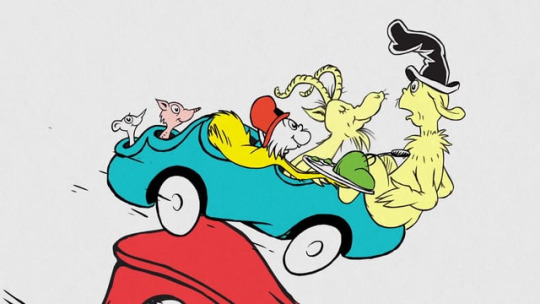
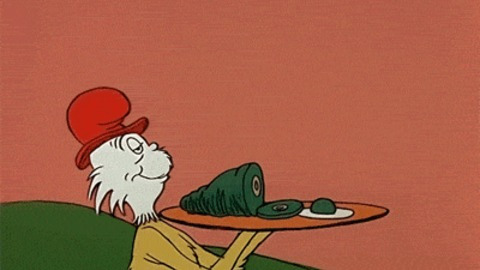
Dr Seusse’s stories were also told by live-action film for example in 2000 the Grinch who stole Christmas and in 2003 the cat in the hat.
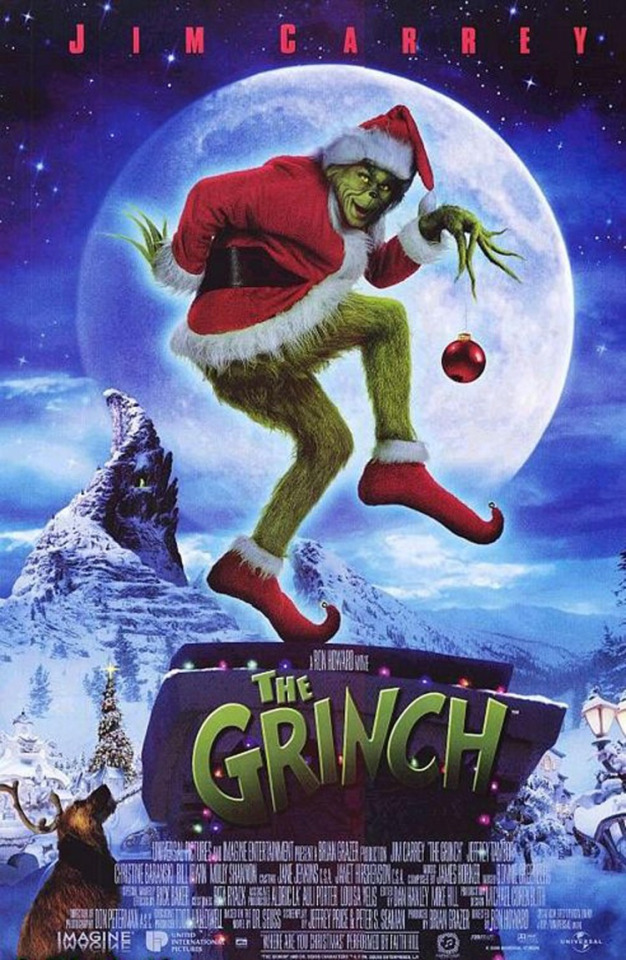
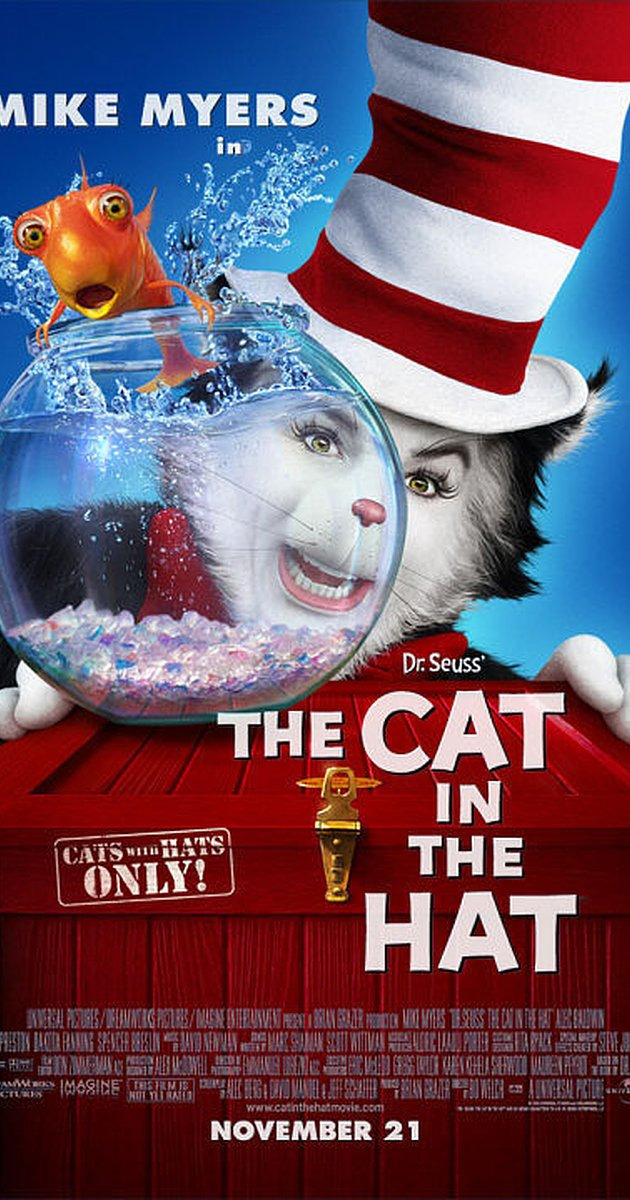
The final and most recent form of how his stories were portrayed was by 3D animation or “CGI”, this method was first used for a Dr Seuss story was in 2008 with the movie Horton Hears a Who by the company Fox then in 2012 with the movie the Lorax by the company illumination, even in late 2018 a new Dr Seuss movie called the Grinch is going to be produced.
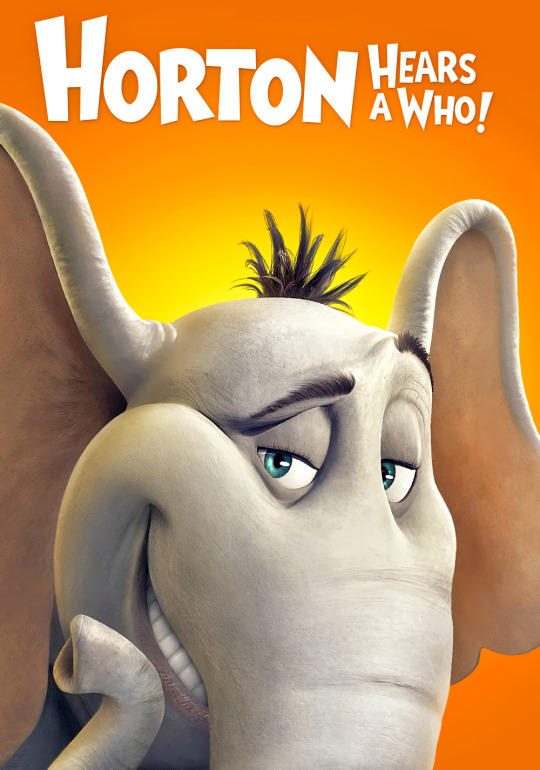
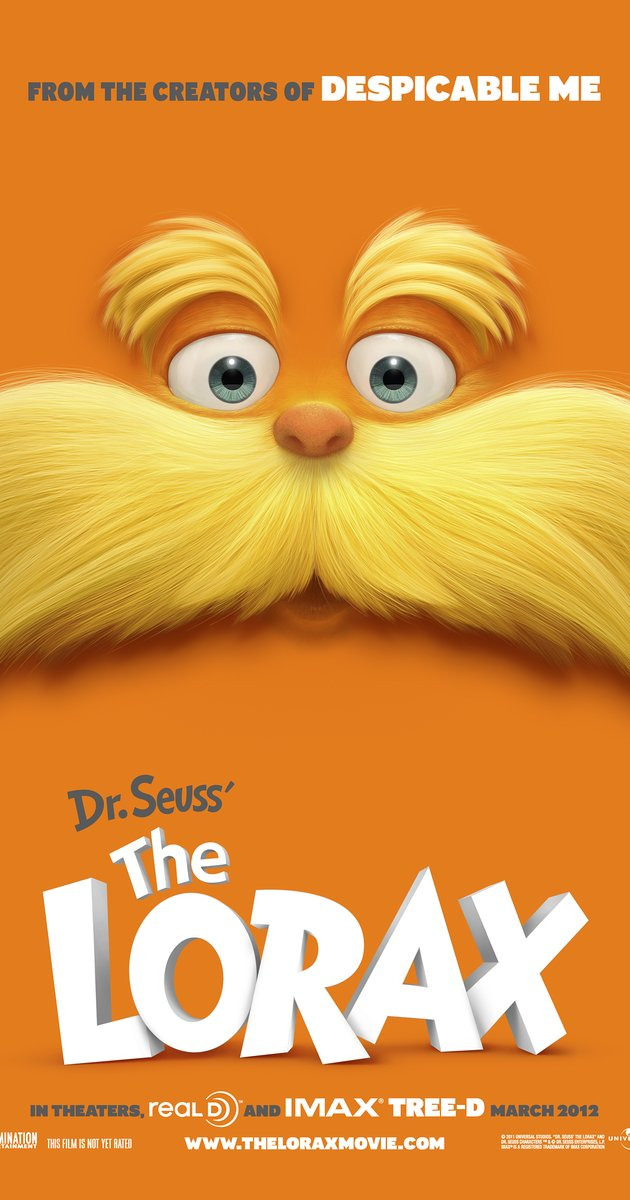
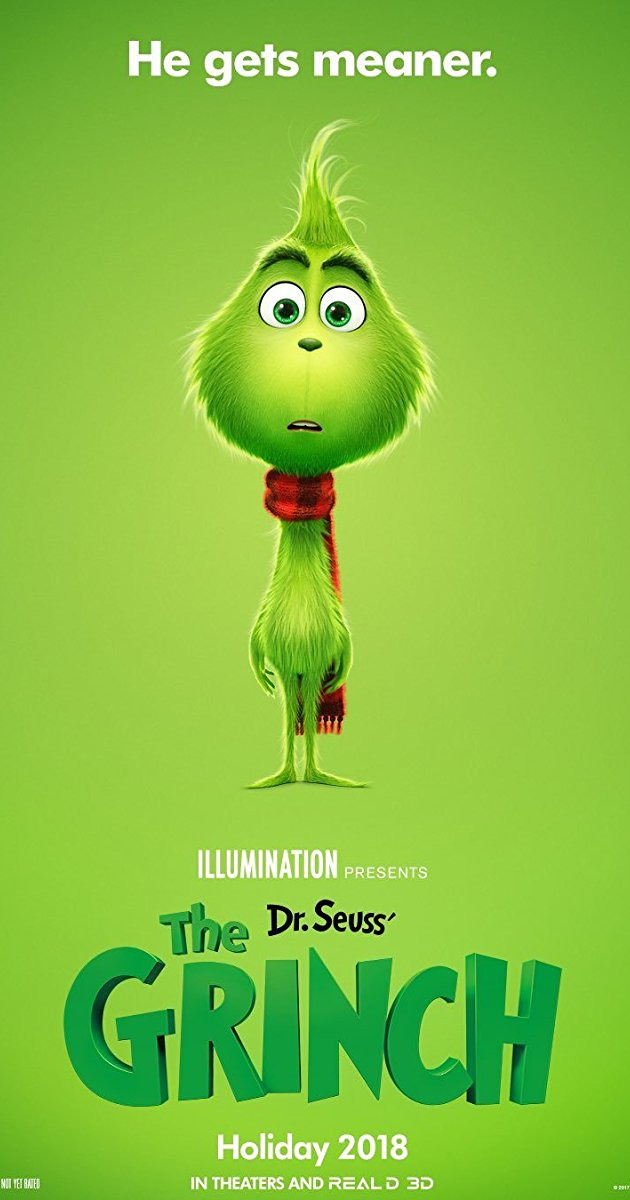
Research – Context 2
Through reading and listening to multiple Dr Seuss books his style comes across as very creative with a set colour theme for each story, these stories tend to be very short which would appeal to a younger audience since they have a shorter attention span.
The three pieces of work by Dr Seuss which appeal to me;
1. If I Ran The Zoo
2. The Lorax
3. The Eye Book
I chose The Lorax since the characters were interesting but also I like the message of being environmentally friendly.
I chose The Eye Book since it was simple to follow and had some fluent rhyming, I also like the use of juxtaposition throughout the book since this made the book more interesting and explores the many different objects eyes can see.
Out of his three pieces of work I have chosen, the one of which I like the most would be If I Ran The Zoo.
What is the narrative/topics of the book?
The purpose of this book is to entertain, it highlights the fact that nothing or no one is the same by showing how certain individuals would run the zoo differently, I like this book more than the others since I like how creative the names of the creatures are but also all the interesting places the main character travels to and how each creature has something unique about them, for example, the character goes to many different climates to find certain creatures this could also be Dr Seuss’s way of telling the reader to be determined to try and accomplish an aim or objective. Also since the child is telling the story this would relate to the target audience who are most likely reading his books, in addition, I like the amount of rhyming in this book, in my opinion, some books contain too much rhyming or drag on something for too long but I find this book to be fast-paced and it remains interesting throughout the whole journey of how Gerald McGrew would run the zoo. Dr Seuss also sticks to a simple colour palette of white, black, red, blue and yellow throughout the whole book with no look of green or purple, also the first thing the main character does when he imagines himself being the zookeeper is releasing all of the animals and by the end of the book all of the animals are free roaming around the zoo whilst smiling, this could show that Dr Seuss is against animal cruelty and feels sympathetic towards animals trapped in zoos. The characters look creatively drawn with very exaggerated features for example when describing the Deers he draws the horns in an unusual way.
Finally, this book is a very personal story to Dr Seuss since when he was younger he used to visit zoos often and think of creative new creatures which would be interesting to look at.
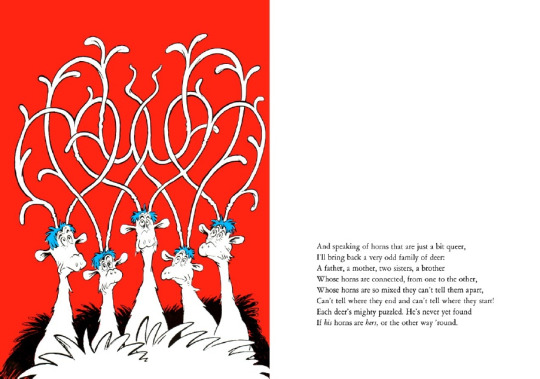
The main characters/character:
The main characters consist of Gerald McGrew who is telling the story and the Zookeeper who listens, Gerald is represented as a creative child who is inquisitive and imaginative, Gerald’s appearance is made up of a red tie with a quite posh outfit suggesting he comes from an upper-class background, however, throughout the book he changes his appearance into the zookeepers clothes which could show that children can be just as capable as adults the quote “Adults are just obsolete children” from Dr Seuss supports that this was his idea coming through the work of the book. The zookeeper isn’t really given much of a personality but is dressed up as a typical zookeeper with a red hat, red tie, black blazer and striped trousers, the character also has a moustache and is chubby with a smug look on his face throughout the story.
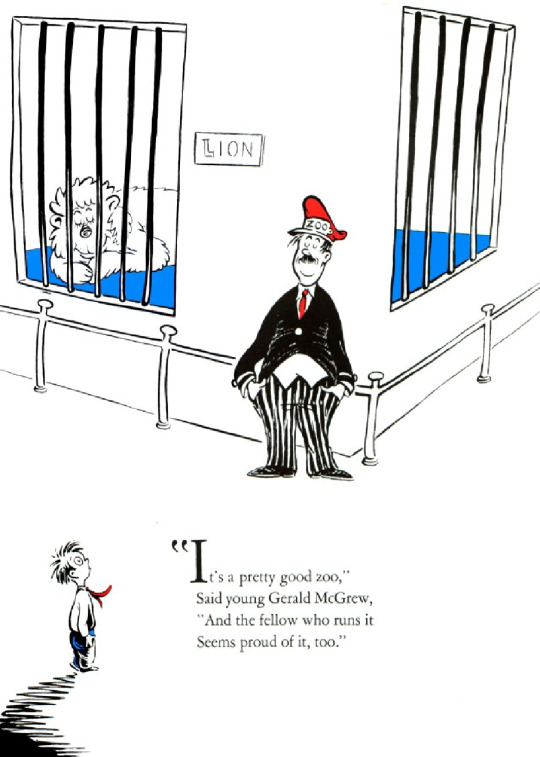
In particular, I like the verse
“ I’ll bag a big bug
Who is very surprising,
A feller who has
A propeller for rising
And zooming around
Making cross-country hops,
From Texas to Boston
With only two stops.
Now that sort of thing
For a bug is just tops!”
I like this verse since it clearly describes the feature of the character and how powerful it is, I also find that this would be fun to animate. On the next page, another verse is interesting which could be fun to animate, the verse goes
“And when I’ve Caught him,
Then the next thing you’ll know
I’ll go and I’ll capture
A wild Tick-Tack-Toe,
With X’s that win
And with Zeros that lose.
He’ll look mighty good
In this Zoo of McGrew’s.”
I like this verse since I could animate the zeros always losing and create my own version of how the creature looks, I could also animate the creature from the previous verse being captured maybe have them hop into a net.
0 notes
Text
Black Woman Creator: Cynthia Francillon
Cynthia Francillon is a 26-year-old storyteller based in Brooklyn, New York. With a Bachelor's Degree in Journalism and Media Arts, where she wrote freelance for online publications such as The Mary Sue and Black Girl Nerds, Cynthia is currently studying for an MFA in Screenwriting at Brooklyn College's Feirstein Graduate School for Cinema. With her growing knowledge of telling visual stories, she wants to develop a catalog of movies and television shows that illustrate the many ways Black girls and women live, and the adventures they embark on as they come into themselves. We spoke to Cynthia about her work and being a creator.
Black Girls Create: Why do you create? Specifically in the medium of film?
I’m somebody that really enjoys stories. I think everyone does, we can’t live life without stories. I seek to read, to watch, to listen stories whether they are nonfiction or fiction, I just love hearing it. I’ve been writing since I was 10, especially after I realized a lot of the books that I read were kind of the same storyline, girl likes boy blah blah. I wanted something different so I thought I should make it and started writing. When I got to college I was studying journalism and we had to take electives. One of the electives I took was media arts and that was where I learned to create visual storytelling and when that happened I was like, “Oh, this is new and I really like it." I’ve always dabbled in wanting to be on camera and wanting to create, but I don’t think I really considered being behind the camera and creating until undergrad. So that happened and I thought "I can do this, I want to do this," and seeing that there was a lack of us as the front runners I thought "I want to be apart of that." That’s what made me want to go to school so I could learn the fundamentals of actually going about making film.
BGC: Studying it and going to school for it and then actually getting out there and creating are two totally different things. How has starting these projects been for you?
Well, because of the fact that I’m in the institution, it’s actually relatively easy. Not to mention I’m in New York. I’m in Brooklyn and my program is at Steiner Studios, which is a film lot where they film a lot of TV shows and movies. So the access is readily available which doesn’t make it difficult, which isn't to say that it couldn’t be, because there are levels to this that need to be considered to a certain degree. As easy as it is to put up a Backstage.com ad to get actors, it’s not as easy to direct them, knowing how to do that. It’s not as easy to hold a casting call, knowing exactly what you want, being able to actually go on Twitter, go on Facebook, go onto pages and say “hey I’m looking for this.” There is a level of vulnerability that you have to have in order to get what you need. Whether that be your crew, your actors, your locations, the crowdfunding to gain money, all that kind of stuff. I would say that I’m in a better position, because of the fact that I’m in an institution where all of that is taught to us and there are a lot of extensions that our school provides versus a lot of people that don’t have the luxury of going to school and who have to do it themselves, but there are levels to this. For example, even if there was somebody who wasn’t going to school, if they’re extroverted enough to the point where they know how to deal with a lot of people or even if your introverted but you know how to talk the talk, you can get your actors. It may take a little more finessing, but if you sell an idea and people want to invest in it and want to be apart of it you can definitely rally people.
BGC: So you talked about how you want to work on projects exclusively about black women and girls. How would you describe your ideal audience of people? Who are you talking to?
I’m definitely talking to the people around my age, whether that be from 24 to 34 years old, but I’m also truly talking to the 50+ and the 17 under you know? It’s interesting because a lot of the stories that I’m making are within the different age ranges where I feel like anybody could enjoy it, they each have their own specific demographics. The feature film that I sent to get into my program is an animated feature film that involves young girls in a planet that’s in a completely different atmosphere. Though it’s animated and it’s geared towards kids, it’s something that I could definitely see people older watching and that's not an issue. A lot of the stories that I do write cater to 24-34 because I’m 26, so there are levels to this that I understand. But I have a lot of friends that are older Black woman as well. I want for them to be able to watch these movies and be like, “Man I wish I had this when I was younger,” or, “This is the thing that at 24 years old I would’ve gone crazy for and even though I’m 60 years old I can still identify with this, I can still enjoy this piece of media." So I would say primarily my target is people around my age but I still want for my stories to be able to extend past that.
BGC: Who or what inspired you to do what you do?
That’s a list. I’ll keep it minimal though - J.K. Rowling is one person. I mean, I didn’t get into the Harry Potter craze until the first movie came out, because I saw how big the books were and I thought “not me.” I didn’t think I was ready for it. Then I watched the first movie in theaters and I was like this is dope as hell so I’m going to go to the books. When I read the books it was like falling through a kaleidoscope of awesome and I was just taken by how developed she made this world out to be, the fact that this world was something I could understand because of my age and the age of the characters. It was just filled with so much wonder and I loved that because that was what I was interested in. So just seeing how J.K. Rowling was able to create this, as an adult, can illustrate that your imagination does not disintegrate. It doesn’t leave you the older you get, if anything it can grow. So J.K. Rowling was definitely a really big influence.
Janelle Monae is another one. I mean, ask anybody who knows me and they know I’m a huge Janelle Monae fan because she was the first time i saw a Black woman very much invested in Afrofuturism before I knew what Afrofuturism was. I was 18 years old when I got into her and that was when she actually really hit the scene with her Chase Suite series and that was also when I was graduating high school and entering college wondering who am I going to be, in this phase of my life like what am I going to embody? I did musical theater a lot and I wanted to continue but I wasn't sure where that avenue was, and then I heard Janelle Monae’s music which to me, sounds like a soundtrack to a musical feature film. I’m just blown away by the artistry and the fantasy and the sci-fi and all that’s within. I’m just completely taken away by her and I love the fact that her music is based around a character that she created. It is literally a story, the arch android is a whole entire chapter book and I love it.
Third, I don’t know if this is going to sound cheesy but I’m really inspired by the woman I want to be, that I envision to be. The person that I always dreamed of becoming. I’m consistently inspired by her because she’s a bad ass bitch, she has everything together. I don’t even think that’s realistic anymore and I’ve humanized her a bit, which is great, but I’m just really inspired to be her because she is living her dream and working in it. She’s not happy all the time, because that’s unrealistic as well, but when she sits back and looks at what she’s achieved she’s content and she’s happy. There is a path and she’s following it.
BGC: How has the journey of getting to the person you want to be informed your art?
One of the most life-changing things that really happened to me was when I was beginning to see myself as a Black woman. I think around 2013, that’s when it really began to happen because I was becoming more active on social media and it was a really pivotal time where conversations were really beginning to center around understanding ourselves and our culture. Especially with Eric Gartner and Mike Brown and Trayvon Martin, especially Trayvon Martin, that’s what really set everything off. That’s when I really began to pay attention to the fact that I am a Black woman, that is who I am and there is something really beautiful about that that I need to explore. I don’t think I ever took a moment to explore the complexities of that before, I never really thought of myself as this person where there are so many layers that I should be able to sit down and really unpack. I really began to understand what I define as a Black woman to me, and in doing that, it really began to help me understand what my passion is. That was something I was always really confused about. I love to tell stories but about what? About who? From what perspective? Me telling you now about what kind of stories I want to make, three or four years ago, I had no idea. It wasn’t until I began to discover myself as a Black woman and stopped calling myself a girl - no I am a woman. When I started to take myself seriously, that’s when I began to see my stories as more than just stories but as something that could really unlock something for me and for whoever else embarks on it with me. That’s not to say that all of my stories are serious because a lot of them are whimsical. I like the realm of magical realism because I like to take real life situations and add magic to it to have that magic be the realization of what we already have inside of ourselves. It’s a more dramatic illustration of it, but it wasn’t until I really began to understand myself that I began to realize that stories are so much more than just something that we tell at night to help our kids go to sleep, something to entertain each other until our lunch break is over. It’s so much more than that, it is something that can actually save a lot of people and I want to save people. I am very invested in saving Black girls and women, my mission here is to remind each other just how awesome we are and to also take a minute and to look to yourself and be like “yo, I am something."
BGC: When you’re feeling overwhelmed or anxious, what do you pull from to keep working hard?
Well, up until two years ago I was really bad at handling those kinds of things. I used to be a perpetual wallower, I would swallow myself in my emotions, it was bad. It wasn’t until I started seeing a therapist that I began to learn that it is ok to be overwhelmed. It is ok to be anxious, it is ok to feel heavily emotional, but what you have to do is to not place thoughts to those feelings. When you’re feeling overwhelmed, feel overwhelmed that’s fine, actually sit down and feel those feelings, but don’t place thoughts to them because that's when you begin to create things in your head and that really begins to mess you up. It’s difficult too, I’m not going to say that it’s easy. I’m a perpetual overthinker, but it comes to a point where you begin to catch yourself doing it. When you catch yourself doing it, that's when you have to sit down for a second and just relax. Alright, you’re feeling overwhelmed, why? What is making you feel that way? Sit down and plan out what you can do to decrease that anxiety. How? Schedule yourself, take it one step at a time. You don’t have to push, you don’t have to go crazy because that doesn’t help at all. Worrying just makes you feel worse. I’ve learned to take a step back and to just feel it. If you’re sad, feel that sadness. Lay in bed and be sad for a little bit and ten minutes later be like "Ok I’m over it." That sadness comes back but that’s natural, it’s going to come back but it’s not going to stay and it doesn't have to stay. Nothing is going to stay if you don’t want it to. This is for me, I'm not talking as someone who suffers from mental illness because for that level, I can’t speak for anybody because that’s a whole other degree. But for someone who does not suffer mental illness, it can be easy, gradually. When you practice it, just to feel things and not add thoughts to them and if you are going to have a thought, the only thought should be why. Why do you feel this way? What is making you feel this way? Basically don’t think to the feeling, just feel the feeling and practice that. Ask yourself questions when you begin to feel a certain way and the more honest you are with yourself, the better you will become at navigating or beginning to control your emotions. A lot of us believe that our emotions control us but that’s not the case. That’s BS actually. I don’t tell anybody that they have to get this right away because I still struggle with it, but I have gotten to the point where I can question myself. Being aware, I think, can help you.
BGC: Do you think that in learning this you’ve seen some change in the way that you attack filmmaking and storytelling?
Oh hell yeah. Because I don’t take things as personal as I used to, I used to take things very hard. I’m not bad with critiquing - I actually really enjoy people critiquing my work and telling me what can be done to elevate it. But what I had difficulty handling was when people just didn’t understand. I guess it was because I made stories very personal to me so whenever that happened I used to take it personally. But now I’m like yes, there is a part of me that is in the story but this is a story. It’s fiction, it’s not real. There is a manipulation here, I’m adding this and that to make it better. Yes, this character is real to you but at the same time it’s not, so there are things that you can play with. So when I realized that, I began to take it less personal and it makes it easier to navigate the story. In me not thinking to my feelings I am able to stay focused and on track. I’m not sitting down wallowing in my feelings, I don’t wallow like I used to anymore. I’m able to get stuff done. Feeling my feelings helped me to become more patient, helps me to listen more and helps me to control the emotions and not get so personal with them. The less personal you are, especially when you’re in a film school with a bunch of other artists, my god, people can be so dramatic. When it comes to your art, people get sensitive about their stuff. You’re entitled to be sensitive because art is not easy. It’s a very vulnerable position to be in, that you enjoy being in regardless, but it’s nauseating at times the way people project themselves on you because they take it personal. So I try to do my best to not be like that as much as possible.
BGC: I see you connecting with other women and I wonder is that something that comes naturally to you or are you mindful about wanting to build these relationships with other Black women especially?
It’s both. I’m naturally talkative, I’m naturally friendly and I’m very curious about people. Humans suck but at the same time, I love them because people intrigue me. Every single person on this earth has a story, I just see stories in everybody and I’m always interested in knowing what yours is. So I like talking to people, I like getting to know them. Not as projects but I’m intrigued. I have my perspective and I want to know what yours is. What is the world like for you? I’m very invested in that. But when it comes to Black women, I think that was another part of my testimony in terms of me finding my passion. A lot of things began to really change for me when I began to realize my Black womanhood within meeting and talking to Black women. It wasn’t until I invested my space into being around them, that things really began to change completely. Prior to 2013, I didn’t have friends. I was that girl who was like I have my boyfriend that’s all I need. But by nature, I am not that type of person. I have numerous friends because I like to talk to people, I like to know people, people like to talk to me. So I was dwindling myself for my relationship and that blew up in flames once I began to talk to Black women and getting to know Black women. I began to feel this undeniable energy of being around these amazing people that are helping me to realize who I am. A friend of mine took me under her wing and invited me to the BlogHer conference, a conference for female bloggers. She was a speaker and I went and I had so much fun around these amazing Black women who did the same things that I did. I remember leaving and feeling like I was on this high and I never wanted it to end. I think because of that, I just started talking more to Black women creators, filmmakers, writers, actors, artists, all types. I really began to learn about myself and I think there was this equal exchange because they’re going through the same thing too. They just want to understand themselves and learn about themselves through each other. Even to this day, I do like to meet Black women because I want to be able to invest in them. I told myself anything I invest in I want to ask a Black woman first. A lot of my mentors are Black women, the people that I’ve worked with have been Black women. The places that I eat or go to I want to make sure it’s Black woman owned. That’s not to say that I will exclude everything else but I will seek that first so I can invest in that first. In me wanting to make that mission I have been able to come into contact with a lot of women and in making the contact I create the friendship or relationship from there. Like I didn’t expect to meet [Robyn] at San Diego Comic Con but we ended up just sitting together because of Connie and from there something sparked and that just happened. I didn’t know anything about [her], I didn’t know what [she] did or what [she] had, we just started talking. Afterwards, that’s when I began to know what [she] did outside of that and then I was like ok, I want to invest I want to be a part of that. For me it goes both ways to be honest.
BGC: Why do you think it’s important for Black women to create art?
Because we have stories to tell, man. It’s as simple as that. There are levels to Black women that people can never understand and I don’t think we should create art to explain that to people, I don’t feel we need to explain ourselves to anybody, but I feel as though in creating the art, we illustrate the different ways in which we’re bad ass, to ourselves especially. A lot of the art that I make isn’t to prove anything to anybody but it’s to cater to the little girl in me or the friend of mine, who has told me the story and needs affirmation in knowing that you are not alone. It’s those little things and I feel as though we should create because if that is our means of expression than please express yourself, it’s a thing we have a tendency to not do. It’s indoctrinated in our culture where we keep quiet and there is so much bottled up, so much tension in our shoulders from having to hold the weight of how we’re feeling inside along with the emotional burdens of other people on top of that. If art is your means of expression, please express yourself. I just want us to feel safe enough that if I want to write a story I’m cleansing myself of all the crap that’s hidden all up inside of me. If I’m a painter, every stroke of the brush is a means of expression,. If I’m a singer, every time I get to the mic I’m going to let people hear it. I’m going to let this out. Black women should make art because they should express themselves, we deserve that right to express ourselves.
BGC: I know being in school, this may not apply, but how do you balance doing the work that you’re doing with the rest of your life? How do you stay balanced, or do you do that?
I can’t balance for shit, I’m still learning how to balance. The thought of organization makes me so happy but I can never get it together because I’m so used to being sporadic. It’s ok to be sporadic but not all the time, it doesn’t always work, so I got a planner and it’s helping me. Being in school also does help because it’s consistent. I’m somewhere at the same time, I have this due, I have teachers holding me accountable, I have classmates that I’m going to work with holding me accountable so that really helps. The friends I’ve made at school who want to continue working over the summer hold me accountable and I do the same for them. So when I hold somebody else accountable I clock my own shit - you’re telling someone else to do it, what about you? I’m not balanced yet, I’m going to be completely honest, but it’s something that I continue to work on because I want to be. The planner does help because I see what it is I want to do and when I do it, I feel really accomplished. A planner helps, having people hold you accountable helps, but then there is the so what about you? How are you going to hold yourself accountable?
I just start thinking about what I’m going to create. If there is a script I'm working on and I haven’t touched it in a few days but I know I need to, I’ll sit down and start thinking about it and visualizing it. Once I get the idea in my head I’m in the zone and once I’m in the zone I have to start writing. That’s how I help myself stay accountable as well.
BGC: Do you have advice for people starting out?
You do not have to know exactly what you need to do right now. In American culture it is very frowned upon if you don’t know what you want and that’s just not right. Everybody is different, you will know what you want, when you know what you want. If you don’t know now that is ok. What you can do if you are interested in delving into the arts, taste everything. If maybe acting is something you want to do, take an acting class, see what that feels like. Put yourself in the spaces of what you’re intrigued by because that at least it will tell you if you want to keep going forward or if you want to try something else. But for whatever it is that you’re trying, don’t just try, actually do it. If you are going to take the acting class, give it your all so that you’ll know in giving it your all if you’re not into it move into something else. If you are really into it, keep going. Put yourself in the spaces. I know that every time I was really confused or I didn’t know what it is that I wanted, I would put myself in the space and that gave me a clearer idea of what it is that I wanted to do. Being in undergrad and being intrigued by filmmaking because of that elective, I took another course that was even deeper in filmmaking. Then I started working in the film industry, I started helping out with film festivals and I started to see more filmmakers and that’s how I realized ok, I really want to do this, and that is what helped me. Putting myself in the spaces based on the intrigue. Whenever you feel like you’re intrigued by something, go with it. Listen to yourself, sharpen that intuition because that’s really important too. Your intuition is really undefeatable and when something feels right, you feel it. But the only way you can do that is if you begin to listen to yourself. If you’re used to denying that intuition, if you’re used to telling yourself that your intuition is correct, then when your intuition is trying to tell you something that’s good, you’ll deny it. Listen to yourself, if you’re intrigued by something go with that intrigue. Let it guide you. My intuition and my intrigue has never steered me wrong, even if the outcome wasn’t the best. In that outcome I still learned something and that helped me for the next time. I was winning even if it felt like I was losing.
BGC: So I know you have Haitian parents. How is that culture different than the American culture and how have those cultural differences informed who you are and what you do?
Haitian culture is kind of the same way, it is very much frowned upon to not know what you want. In Haitian culture, there is no taking a break, you’re in school, then you go straight to work, then as you’re working, you save up money you go straight to having your own house, getting married having kids. There is this linear path, it’s kind of like the American dream in its own way. The only thing that’s in Haitian culture, you gotta be a doctor or an engineer or a lawyer. Something that will definitely make you money. Being an artist? Hell to the no, it can be a hobby, it can be fun, but as a profession? Nah. That’s why I’m really thankful my parents are not like that, they definitely were to a certain extent, especially when my sisters and I were trying to decide college-wise what we wanted to do. For example, my parents noticed that I loved reading and that I loved to write stories, they noticed it so they were like ok why don’t you do this. My little sister loved performing, she loved to dance and sing so my mom put her in pageants and put her in performing classes. But when we got older my parents began to ask those questions, so what do you want to do? Because I like to argue a lot, my parents were like, you should be a lawyer, so then because I was blogging a lot I was like I think I want to go into journalism. My mom was like eh but my dad was like my daughter can be on CNN, go for it. So even within those realms they’re still thinking really big and a lot of money. I would want to be a print journalist or in a magazine but my parents are thinking CNN and MSNBC. They’re still thinking bigger for me.
BGC: If you could make anything and money, time, and resources were not an issue, what would it be?
There are so many projects that I would love to make. I’d make that animated feature film, I would make a bunch of the shorts that I would love to make. I would make the TV show that I’m currently trying to write, but most importantly I would make programs for kids in the hood, especially. I would make programs for kids who do not have access to camera equipment and facilities so that they could learn how to tell their stories and to be unafraid of getting creative with those stories. I think it is very important to teach young kids that their imagination doesn't just have to stay that way, it doesn’t have to be something that you just daydream about. I would love to have them in schools so it’s necessary and fundamental that they learn to do this because I would rather just put them in the environment. As a kid, it’s always good to dabble in everything, so just like physical education is mandatory I think music and arts should be mandatory as well and it’s a shame that they’re removing a lot of it from schools. Kids really need to be able to express themselves in a creative atmosphere. When you’re in school and you’re looking at math and history that’s cool but it’s not the only thing. They need their imagination enticed as well. So if money wasn't an issue I would do that in a heartbeat.
BGC: Any future projects that we should be on the lookout for?
So a friend of mine, Rebecca Theodore who is also Haitian-American and a Virgo like I am, she brought me in as a partner to co-direct, co-produce, and co-write a short film series that she’s making that centers around the different ways that Black women love and the types of relationships that they have. That’s all I can say right now but be on the look out because we are currently casting and currently writing and we’re going to be opening up a crowdfunding campaign pretty soon which I’m really excited about. I’m also going to be, possibly, making two short films over the summer. I’m ready to work.
0 notes
Text
MTV Movie and TV Awards celebrity bags! Win One!
MTV Movie and TV Awards celebrity bags! Win One!
Celebrity gift bags are loaded with some awesome stuff and now you have a chance to win one! Bu make sure to check out the official rules right [ HERE ].
“The Sponsor of the MTV Movie & TV Awards 2017 Sweepstakes (“Sweepstakes”) is OK! Magazine (“Sponsor”), 4 New York Plaza, 2nd Floor, New York, NY 10004. 2. How To Enter: Beginning on 5/4/17, go to http://ift.tt/1ji4p89 and follow the MTV Movie & TV Awards 2017 Sweepstakes entry directions. All entries must be received no later than 11:59pm PST on 5/8/17. Only one internet entry per person and per e-mail address will be accepted. Subsequent attempts made by the same individual to submit multiple internet entries using multiple e-mail addresses or otherwise will be disqualified. In the event of a dispute over the identity of an online entrant, entry will be deemed submitted by the authorized account holder of the e-mail address associated with the entry. Authorized account holder is defined as the person assigned to an e-mail address by an Internet access provider, on-line service provider or other organization responsible for assigning e-mail addresses. All materials submitted become the property of Sponsor and will not be returned. 3. Winner Selection / Random Drawing: One (1) winner(s) will be selected in a random drawing to be held on or about 5/15/17 from among all eligible entries that are complete. The random drawing will be conducted by representatives from Sponsor whose decisions are final and binding in all respects relating to this Sweepstakes. Odds of winning a Prize depend upon the total number of eligible entries received. The winner will be notified via email and/or telephone. If the winner(s) cannot be contacted within 10 days of the first attempt to notify, Sponsor will re-draw.”
Prize includes:
Prize includes:
1MORE Triple Driver In-Ear Headphones – Award-winning headphones meticulously designed for superior sound quality and style.
Abella Skin Care, Inc. ColorShade – SPF 35 Tinted sunscreen lotion available in 4 tints to accommodate today’s consumer demographic. Blend wells with makeup.
Atlantis The Palm, Dubai – Atlantis, The Palm is a unique ocean-themed resort which features a variety of marine and entertainment attractions, as well as 17 hectares of waterscape amusement at Aquaventure Waterpark, all within a 46 hectare site. It is home to one of the largest marine habitats in the world, with over 65,000 marine animals. Prize includes one night stay.
BIODERMA USA – Bioderma Sensibio H2O is a cleansing and make-up removing water that respects the fragility of sensitive skin. One bottle of Sensibio H2O is sold every 2 seconds around the world!
BOMBATA USA Corp. – Micro Bombata Briefcase for 11 inch laptop and Tablet.
CROTON WATCH CO – Croton has always been a family owned and operated company since its inception in 1878. We are the benchmark of quality, style, precision and value.
El Castillo Boutique Luxury Hotel – Costa Rica – El Castillo Boutique Luxury Hotel located in South Pacific Costa Rica. One of the most spectacular ocean views in the world and winner of the 2017 TripAdvisor Travelers Choice award for “Top 25 Small Hotels – Central America”. Prize includes one night stay.
Everything, Everything by Nicola Yoon – Book / Movie Tie-in.
Hasbro Gaming
Flip Challenge game – Based on the viral “bottle flipping challenge,” players ages 8+ can toss a bottle in the air and attempt to land it on one of the four unique Flip Challenge targets. Kids can master the 40 included trick shot challenge cards, compete with friends, or customize their very own bottle flipping games!
Speak Out: Kids Vs. Parents Edition game – The new SPEAK OUT game will pit adults against kids ages 8+ in a hilarious mouthpiece challenge! With included kid-sized and adult-sized mouthpieces, the Speak Out: Kids Vs. Parents Edition Game will have families doubled over in laughter as each member attempts to say a whacky muffled phrase!
Hempz – Limited Edition Yuzu & Starfruit Herbal Moisturizing and Nourishing Shampoo and Conditioner are enriched with 100% Pure Natural Hemp Seed Oil and blended with a refreshing mix of essential extracts, ultra-mild cleansers and key styling benefits to help restore moisture, smoothness, shine and protect hair from heat, humidity and frizz.
Institute Beaute – Stilettos Rx cushions the balls of your foot, decreases burning, painful pressure and cramping… No matter how high the heel!
Lauren Hope – A sexy, slinky silhouette that instantly transforms. Whether for work, Sunday Brunch, drinks with the girls or your next date – this necklace will be the one you reach for.
Malibu Jane Footwear – California classic sandals and footwear.
McFadin – Handbags, luggage and accessories handmade in Texas by two sisters, Stacy and Laurie McFadin.
Mocktails Brand Alcohol Free Cocktails – Not a cocktail and not a mixer (although you can add alcohol if you like), Mocktails is a new line of all natural drinks that presents itself like any other drink at the bar, both in taste and appearance. But don’t let this appearance or its ability to manifest the same kind of carefree fun as a boozy brunch fool you… its 100% alcohol free!
NEW Old Spice Hydro Wash Body Wash – Wash away doubt and anxiety with NEW Hydro Wash body wash and put on your confidence suit to emerge as a new man. Hydro Wash features Old Spice’s proprietary “dual stream” formula, keeping moisturizers and cleansers separate so that the moisturizers don’t wash away with the lather before hydrating the skin.
Raden – Raden is everything you need to seamlessly get from point A to B- an end to end experience for better travel by pairing the world’s best materials with technology.
Rick and Morty Ripple Junction T-Shirt & FUNKO Mystery Minis – This comfy red heather shirt is a poly cotton blend that is suitable for intergalactic adventures or just scarfing down chicken nuggets. Go on adventures across the universe with Rick and Morty in a science experiment gone wrong (or gone delightfully right) where Rick has turned all your favorite characters into Mystery Minis!
Savannah Bee Company – Savannah Bee Company is the leader in honey purity standards; any honey poured by Savannah Bee Company as a specialty varietal honey must have a minimum of 80% pollen count, which ensures that the honey exhibits the best flavor and texture possible from the blossom crop. We take pride in our honeys’ flavor and purity, so we don’t process, over-filter, or add anything at all.
SPECTRAL.LASH EYE LASH STIMULATOR by DS LABORATORIES – Long, luxurious eyelashes have the power to transform anyone’s face for the better. Spectral.LASH from DS Laboratories is an amazing drug free formulation that is clinically proven to increase eyelash thickness and density and grow lashes up to 25 percent longer in just four weeks.
The Sea Fire Grill – Enjoy locally sourced, contemporary American Seafood at the acclaimed Sea Fire Grill!
Topgolf – Topgolf features fun and competitive golf games for all ages, climate-controlled playing “bays” similar to a bowling lane, an impressive food and drink menu, private spaces for groups of any size, HDTVs to watch the big game and a music selection that will make every visit feel like a party. Prize includes a Topgolf hat.
Trapp Fragrances – The Trapp Ambiance Collection – “A bottle of perfume in every candle®”. Fill your room with fragrance while providing a pleasing ambient glow.
Wrytewood boxed travel notes – Sophisticated and witty travel-inspired boxed notecards. Stop thinking- start writing.
**Items in photo subject to change based on availability- some colors and styles may vary. Courtesy of Backstage Creations.
The post MTV Movie and TV Awards celebrity bags! Win One! appeared first on Celebrity News | Positive Celebrity Gossip | Laurara Monique.
No related posts.
from WordPress http://ift.tt/2qHl2cd via IFTTT
0 notes
Photo

Media Convergence
Pokémon Go
Pokémon Go utilizes a concept known as augmented reality to incorporate features and characters from the popular game series into a smartphone application by tapping into the phones’ GPS capabilities, large processing power, and camera functions available. In the classic Nintendo Gameboy, N64, and GameCube games (which continues on modern Nintendo platforms), players controlled a protagonist character. The player has guided exploration as he/she collects wild Pokémon and battles other trainers. In many ways, the traditional Pokémon games are similar to other Nintendo role playing games like The Legend of Zelda in terms of structure, but they lack the intricate story and fantasy elements due to their target audience being generally younger.
Pokémon Go targets those that grew up playing the classic games by tapping into the nostalgia effect, but its game mechanics allow it to extend beyond that limited demographic and attract players of all ages. Rather than controlling a player and having a defined objective, players hunt the creatures in the “real world.” The game utilizes massive amounts of information to distribute creatures, gyms, and Pokéstops around the world. Pokémon can be captured against a “normal” animated video game screen or in “the real world” via the augmented reality setting which uses the phone’s camera to present the creature in the player’s “reality.” The gyms and Pokéstops are typically landmarks whose photos are incorporated into the game itself, regardless of whether the player is utilizing the augmented reality setting or not.
Unlike traditional games, Pokémon Go lacks a firm measurement of success, but it does offer various rewards. For example, walking specified distances allow players to earn candy or hatch eggs, both of which are necessary to catch all of the creatures. Gym battles allow players to earn Pokécoins, which can be used for in game purchases. Holding onto gyms earns players additional coins and also demonstrates some level of prestige to other players. These factors, combined with the game’s simple play, led to its widespread adoption by longtime fans and newcomers.
For many, Pokémon Go has become a necessity on long walks. The recent release of second generation characters will undoubtedly prolong its popularity among casual gamers. While this is the first high profile game of this type (similar games preceded it, but lacked the mainstream appeal of Pokémon), it certainly will not be the last. The Star Wars and Harry Potter franchises are currently being developed into augmented reality smartphone games. If nothing else, has demonstrated that there is a market for easy to use nostalgia based smartphone gaming.
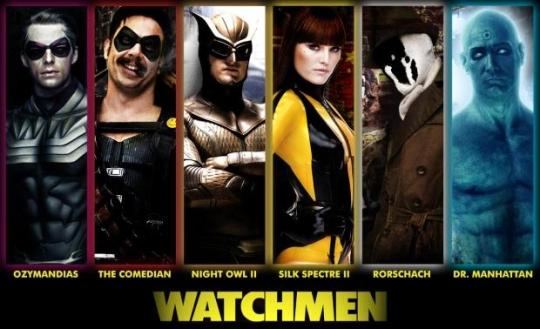
Image from Den of Geek
Watchmen
Watchmen is an interesting case. The original graphic novel, written by Alan Moore, is a deconstruction of the comic book medium. Moore’s characters are tainted, dirty, and behave in a manner more similar to the “real world.” Operating out of self-preservation and often with their own goals in mind, these heroes are far removed from DC’s traditional flagship characters. It is a commentary on the folly of man as viewed through the eyes of superhumans. Further, Moore deemed his work unfilmable because he opposed the idea of turning his anti-establishment literature into a commercial property.
Of course, this notion was lost on Warner Bros., the parent company of DC comics. As movies featuring superheroes moved into the mainstream, Warner Bros. opted to adapt DC’s most notable graphic novel. Further underscoring the company’s lack of understanding for the material and complete disregard for its creator, Zack Snyder was chosen to direct the film. Snyder is well known for his flashy, commercial style and his emphasis on superficial presentation rather than character depth. In this respect, Snyder was the ideal choice to adapt the graphic novel because he delivered a film that perfectly presented the characters as they appear in the source material with very little deviation. He also lifted the scripting nearly verbatim. The result, was a beautiful but hollow film that plodded through its nearly three hours of runtime.
In a way, Snyder unwittingly produced a film that serves the exact opposite of its source material’s intent. Rather than provide deconstructionist commentary on the state of superhero films, Snyder’s Watchmen is the ultimate commercial adaptation. The film required little creativity as it was a paint-by-numbers adaptation that felt more like a remake akin to Gus Van Sant’s Psycho. Still, the film performed well enough to lead Warner Bros. to put Snyder in charge of the DC Extended Universe where his flair for style over substance has caused some issues.

Image from Buffalo Wild Wings
Buffalo Wild Wings
Last week, my wife was craving hot wings. In our community, this pretty much made B-Dubs the only option. Neither of us had been there since the summer because we live in a college town and the pace is packed during football season. When we entered, it looked same with large TVs playing sports everywhere. Then we noticed the tablet sitting on the table.
I’ve experienced tablets at other restaurants; they are usually used to enhance ordering. At B-Dubs, though, the tablets are also used for games. Of course, trivia games have been at Buffalo Wild Wings for as long as I can remember, but this was the first time that I recall having other options and individualized trivia at the table. Some games were absolutely free, others had fees for optional items. All of the games had the option of registering an account and earning rewards. My wife played a couple of games while we waited for our food.
The thing is, I played on my phone while we waited. She would have done the same had the game tablet not been available. Buffalo Wild Wings, and others that have started supplying tablets, are capitalizing on the behaviors society has exhibited since smartphones became ubiquitous. Culturally, we are addicted to technology and have created a need to be entertained with games and devices on a regular basis.
0 notes